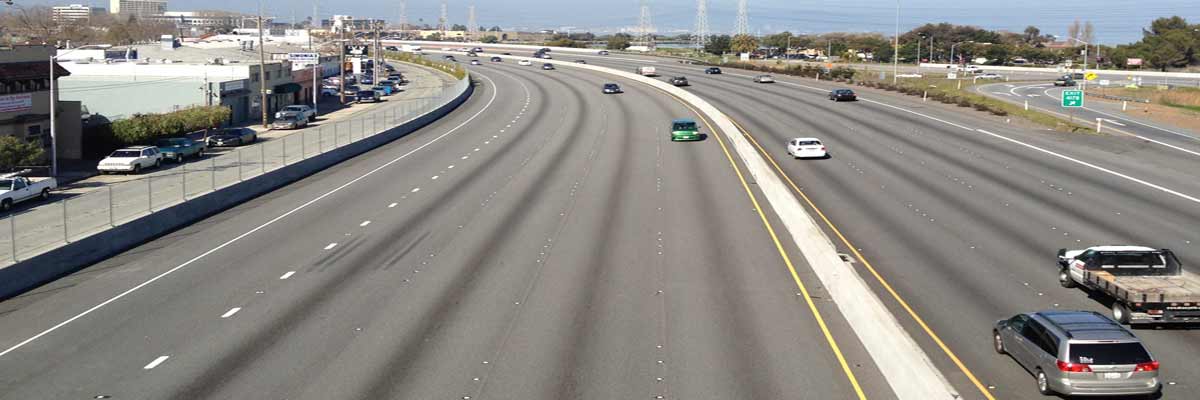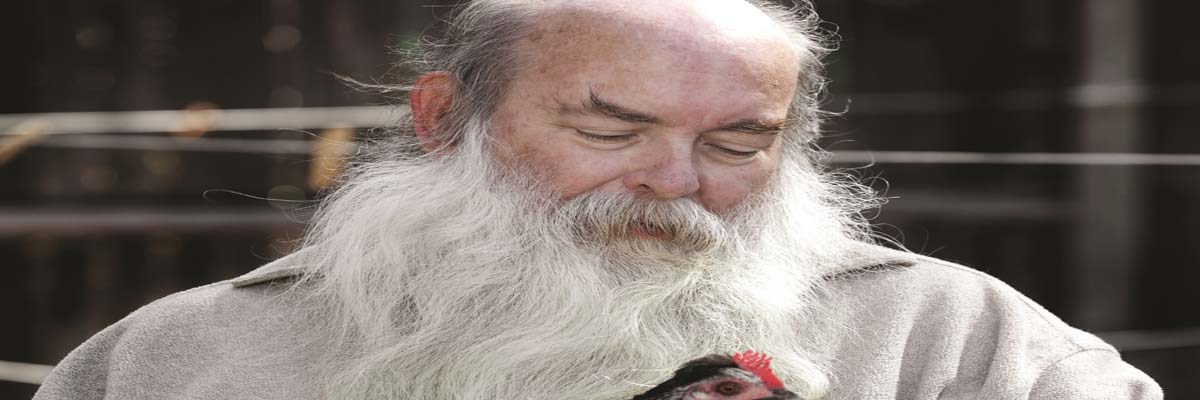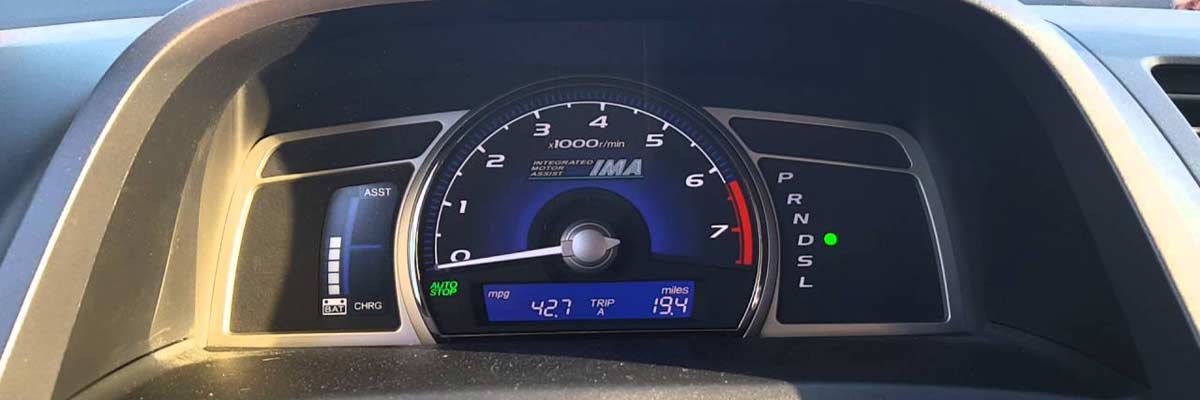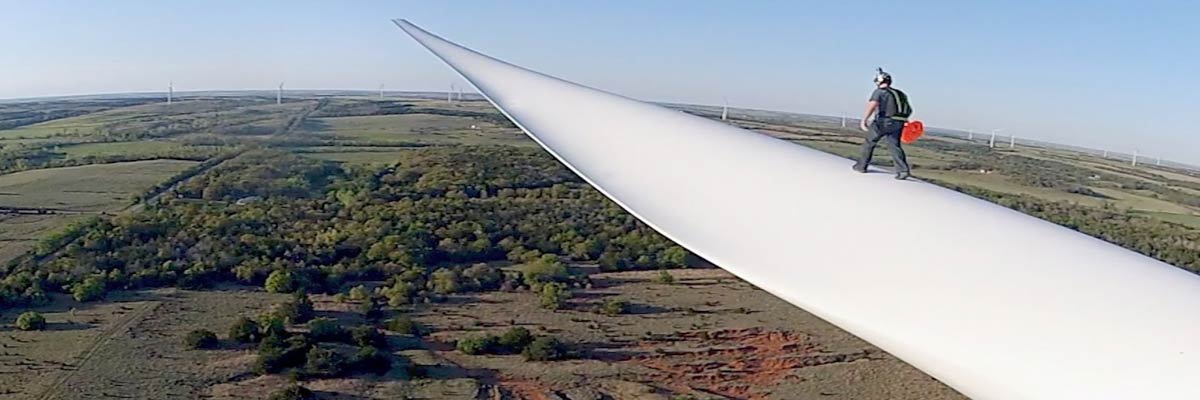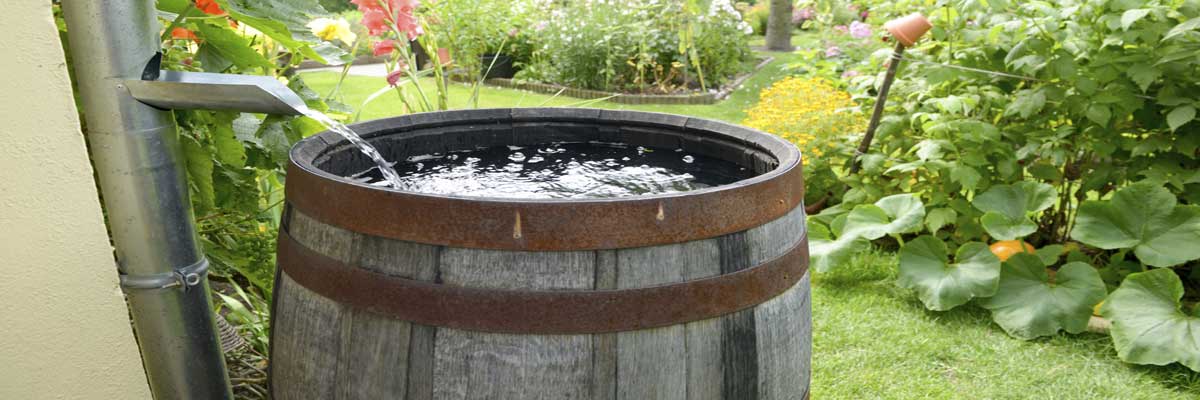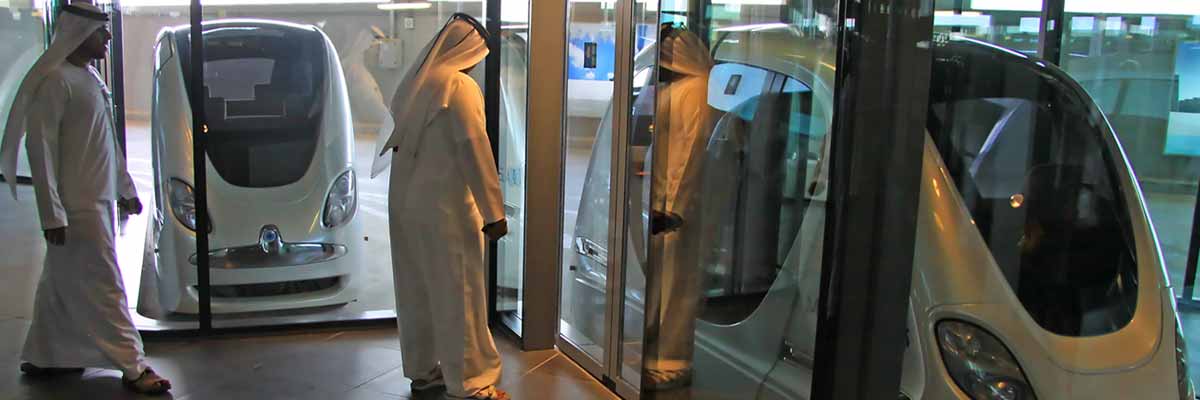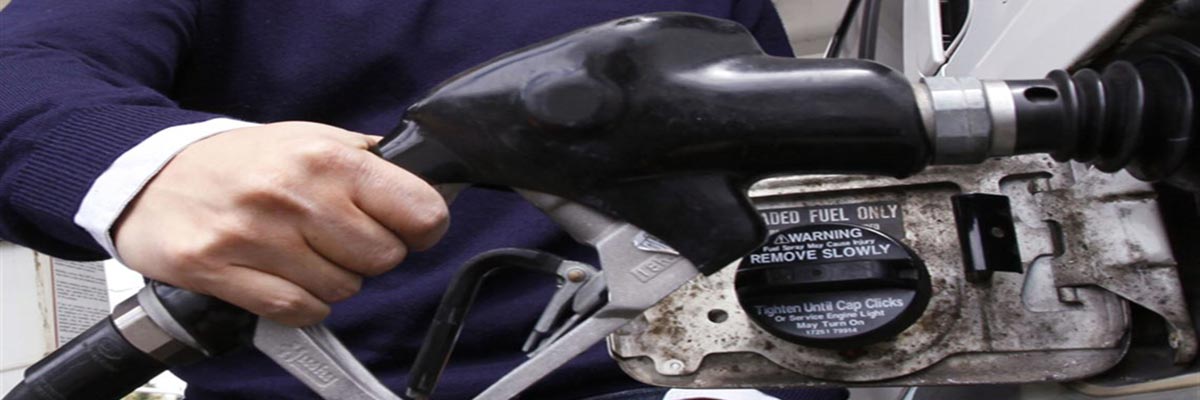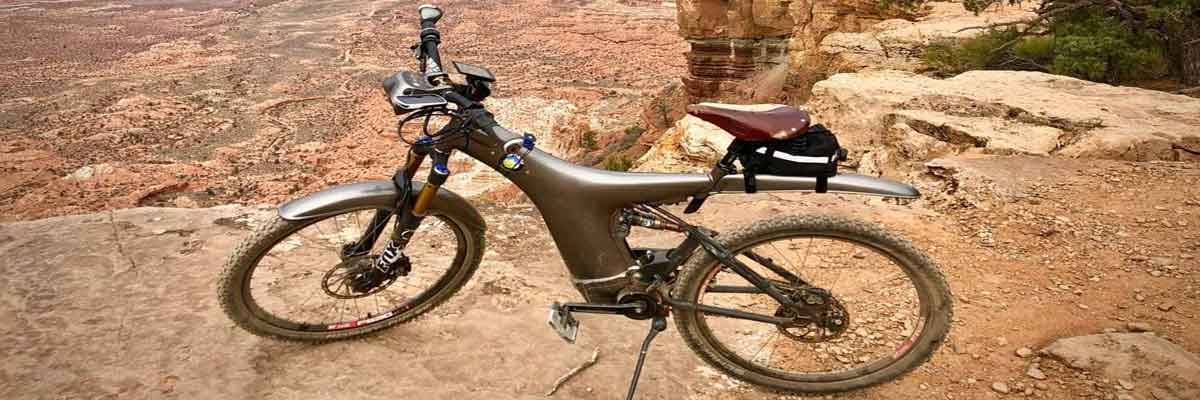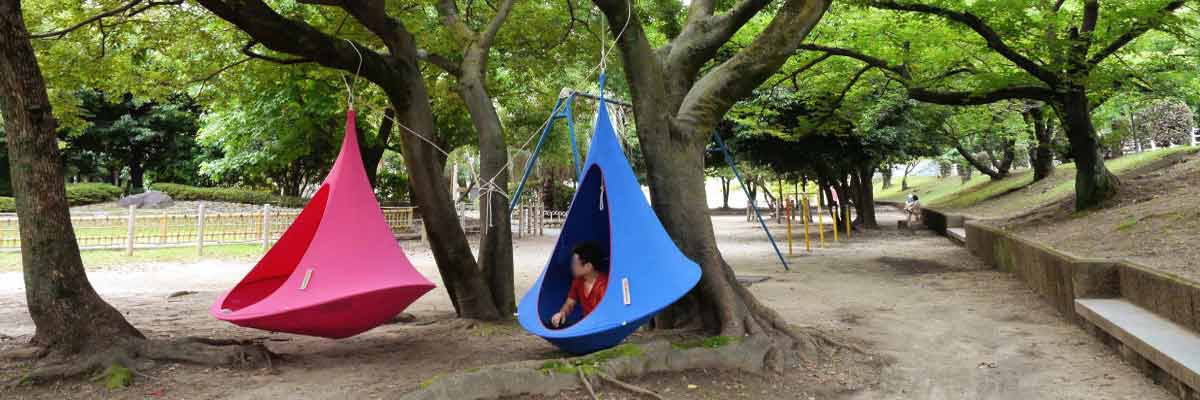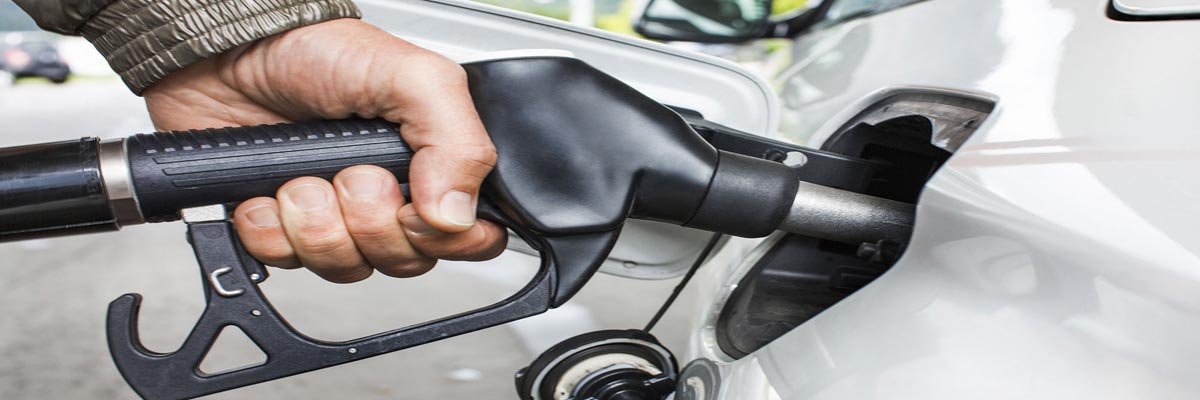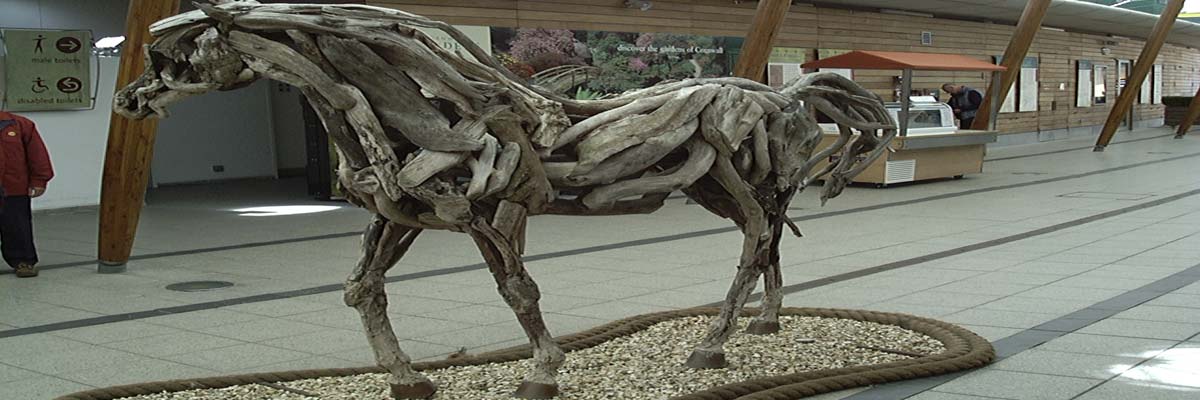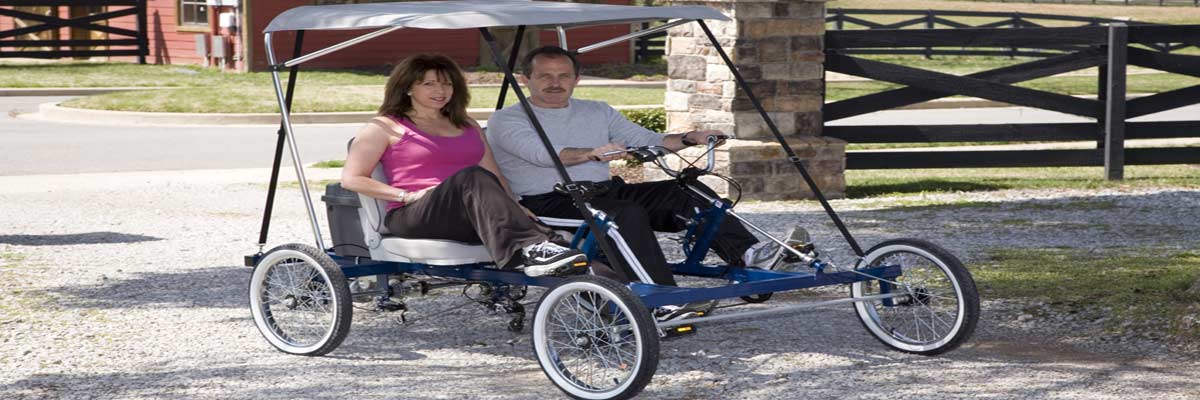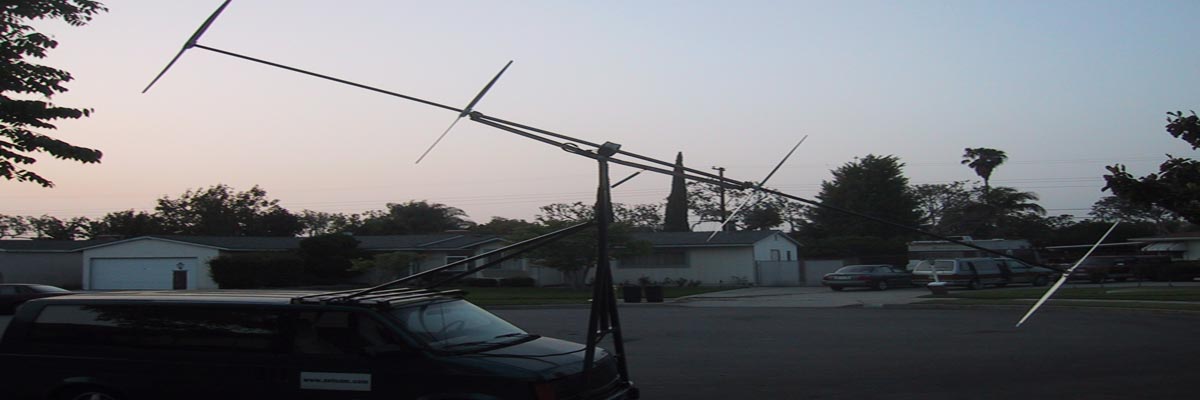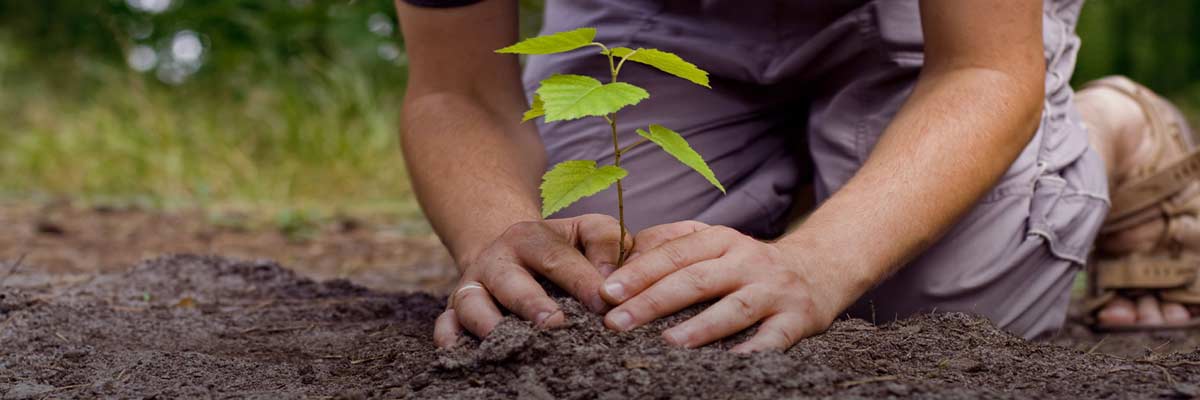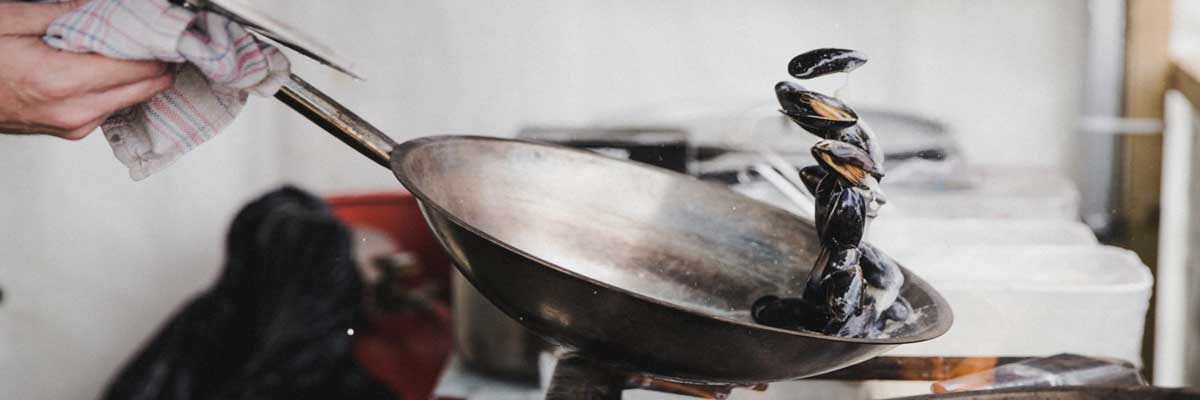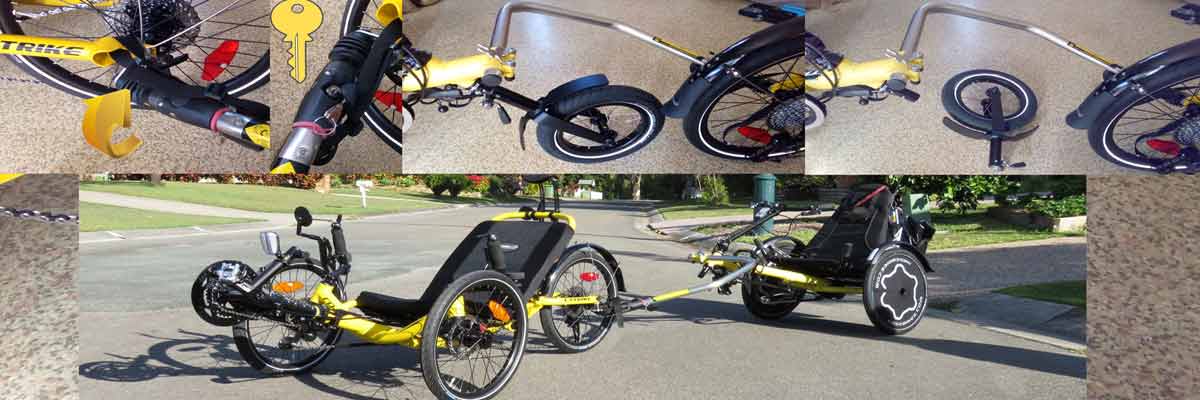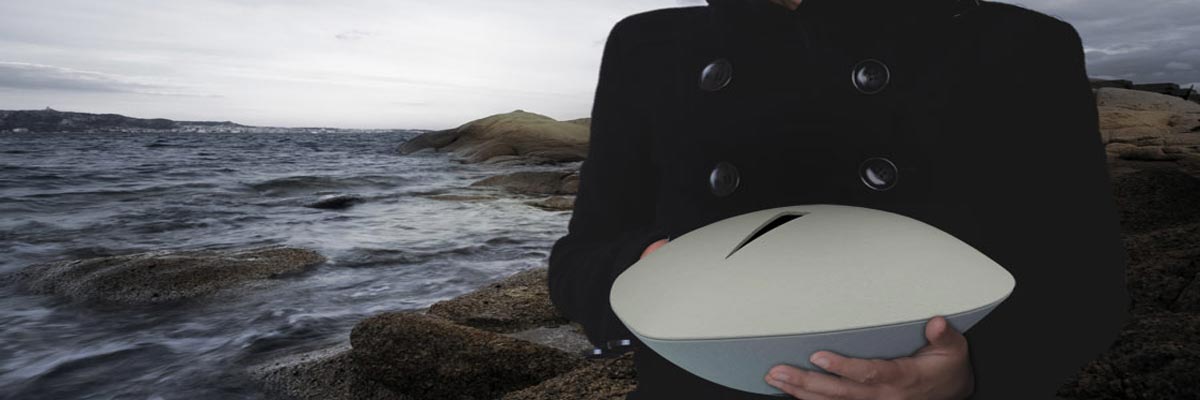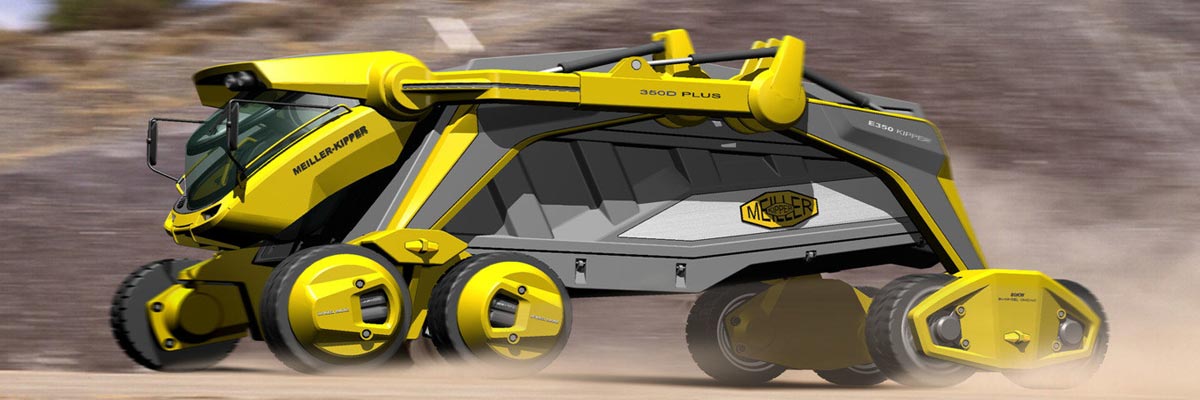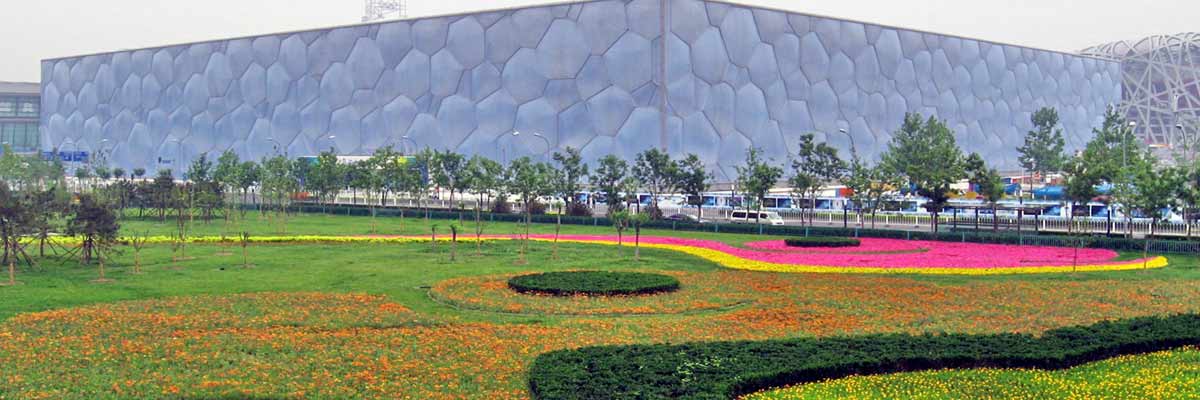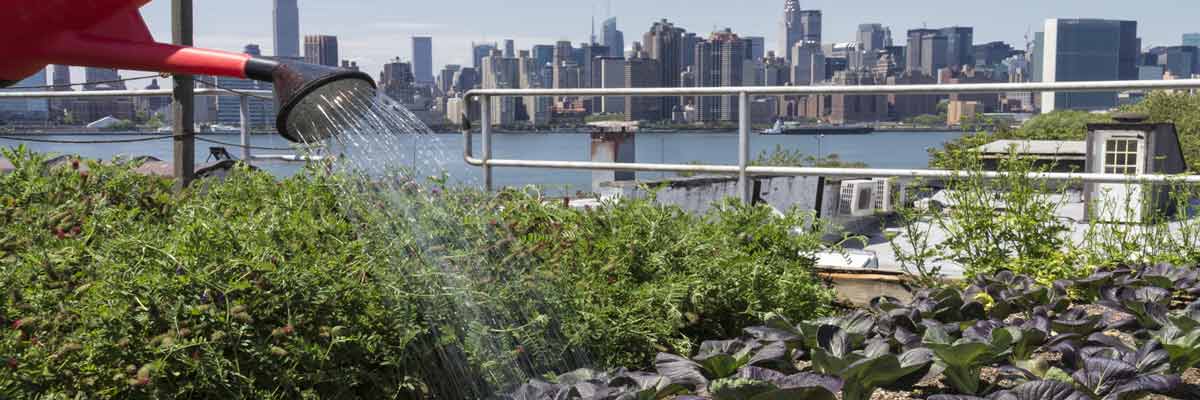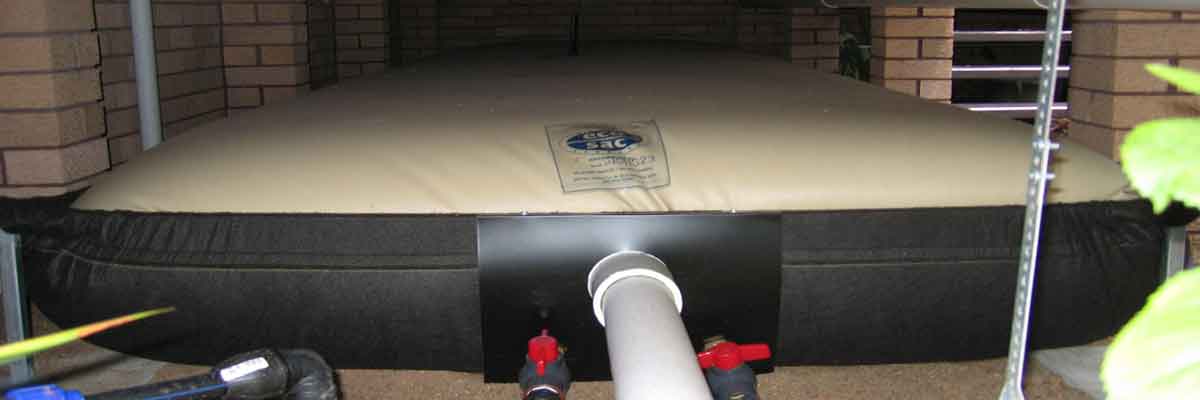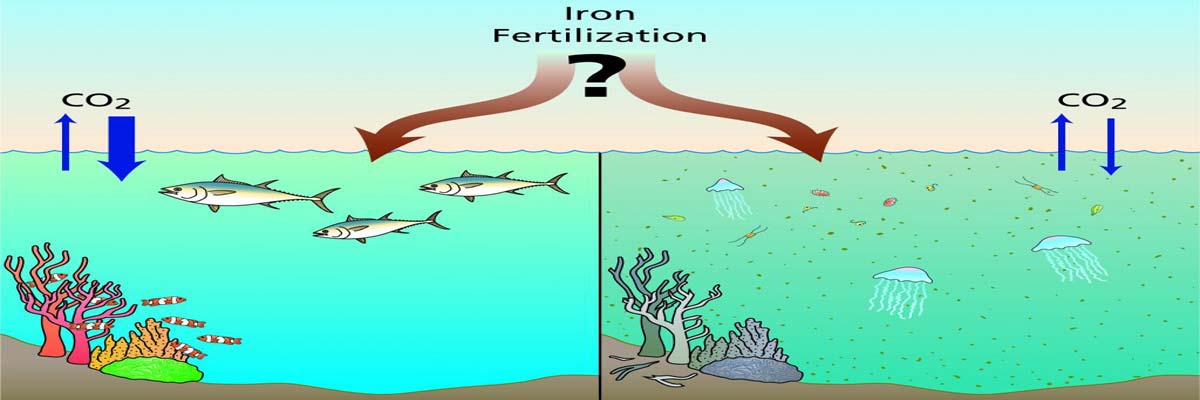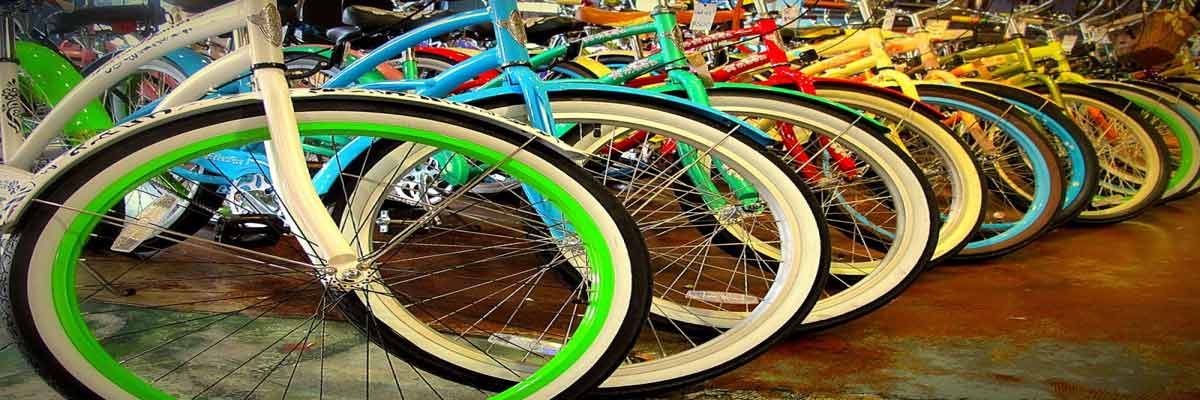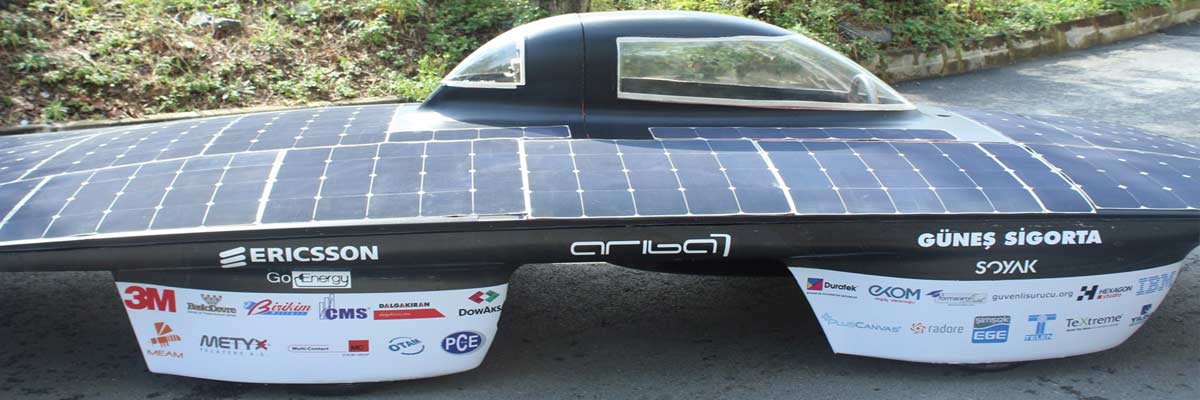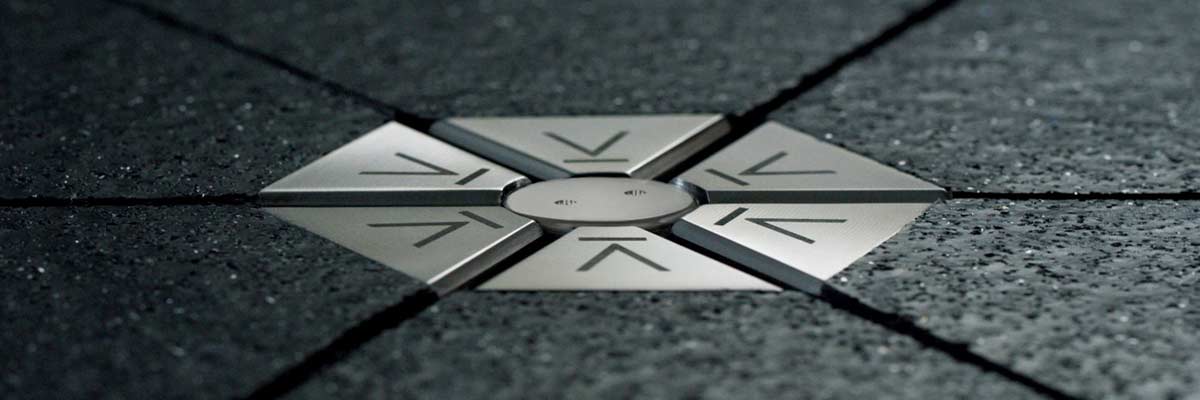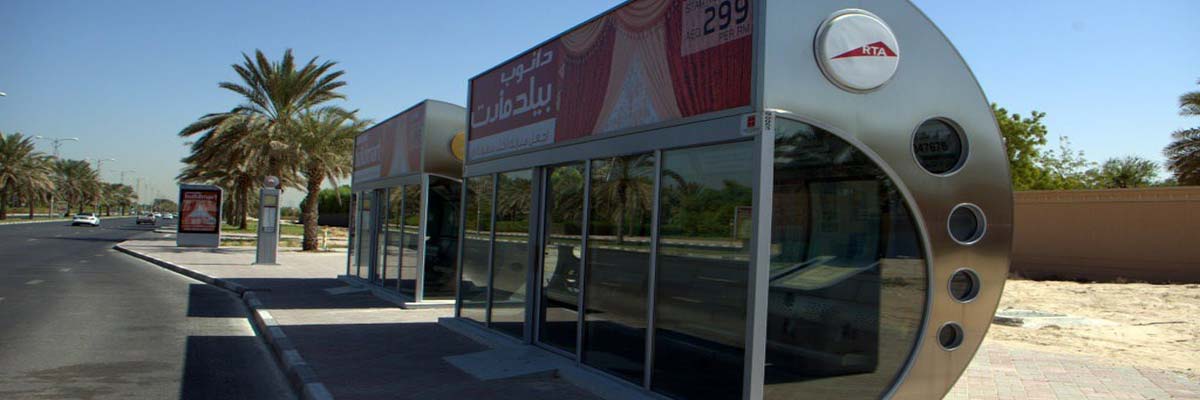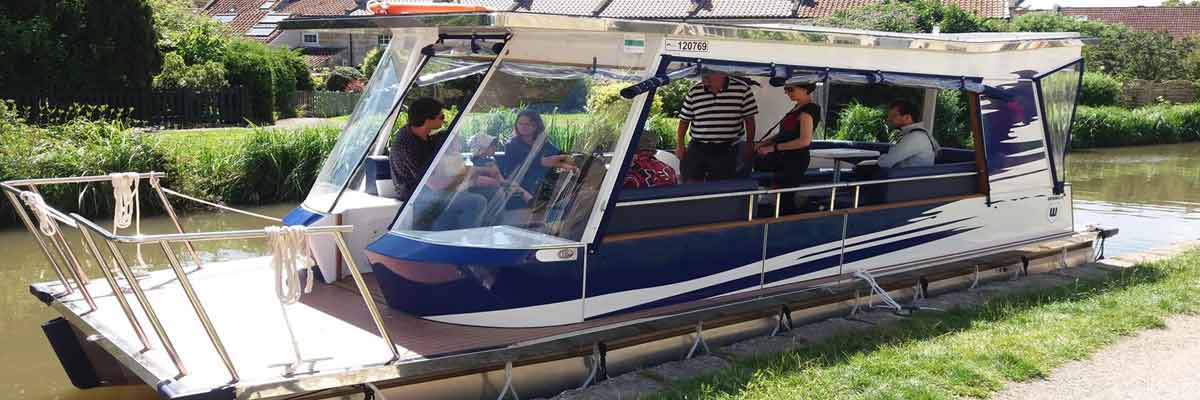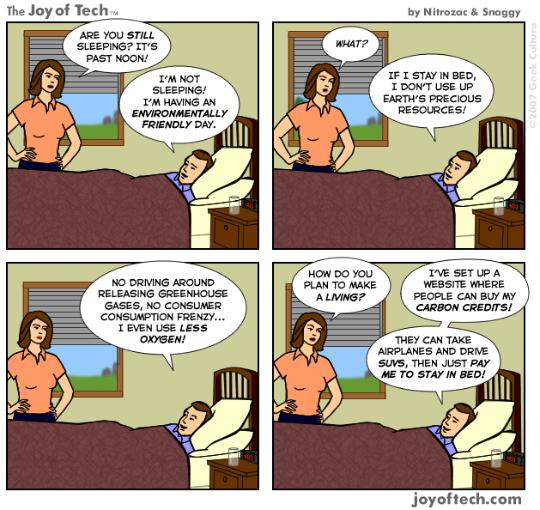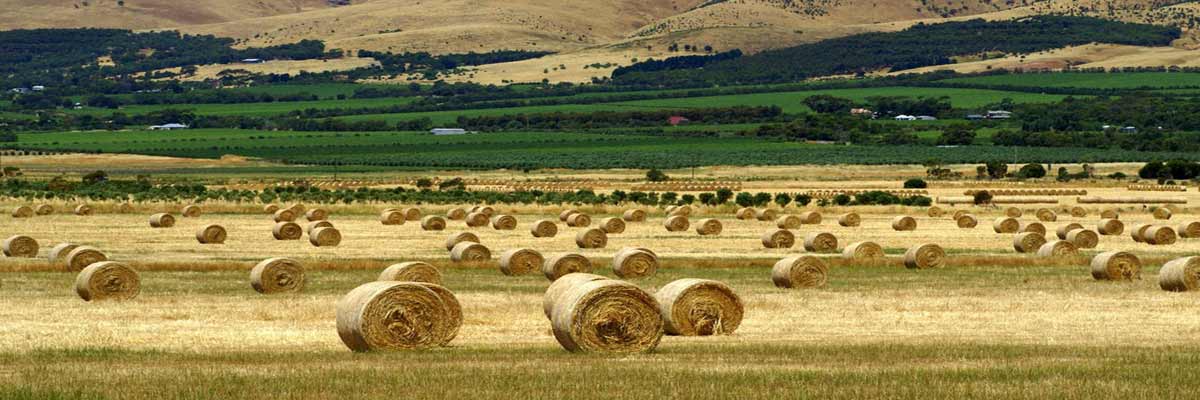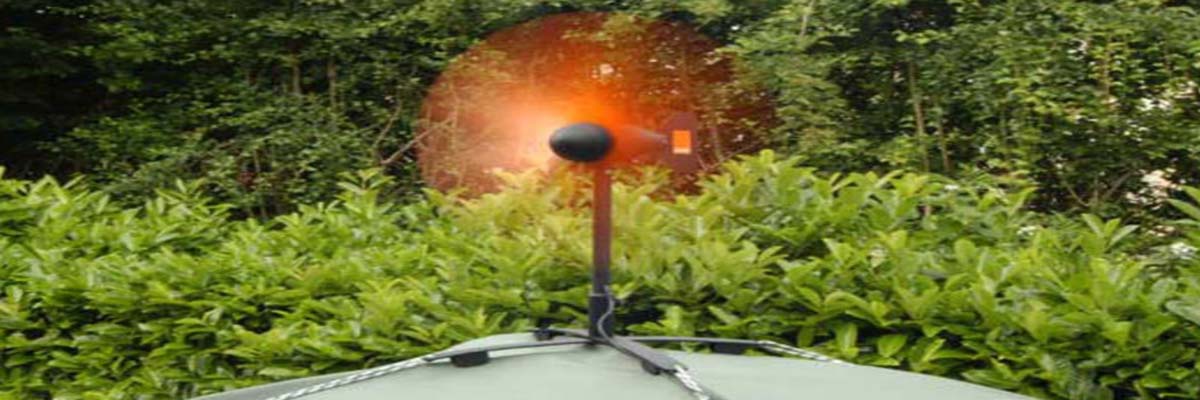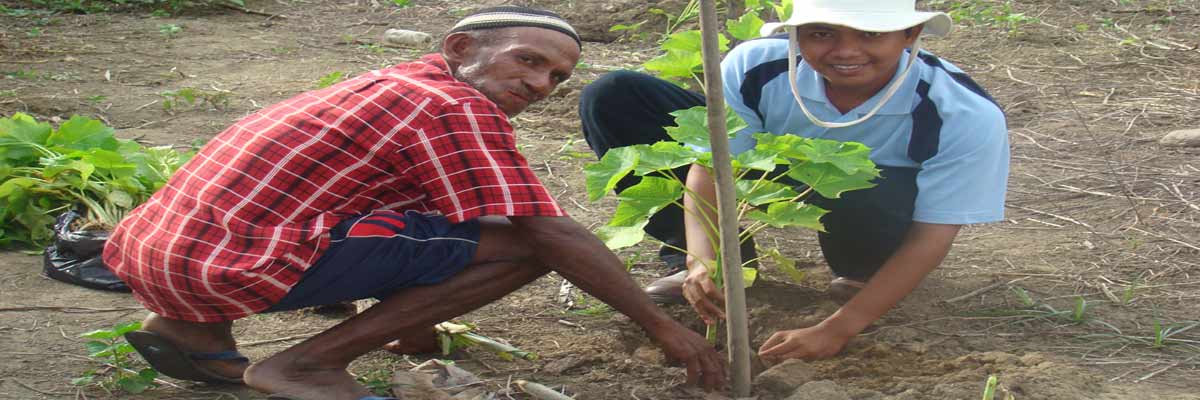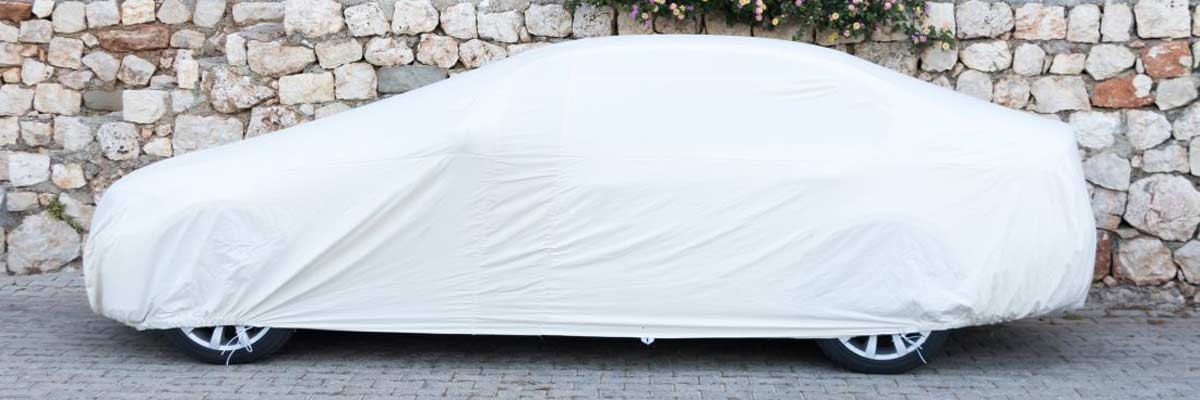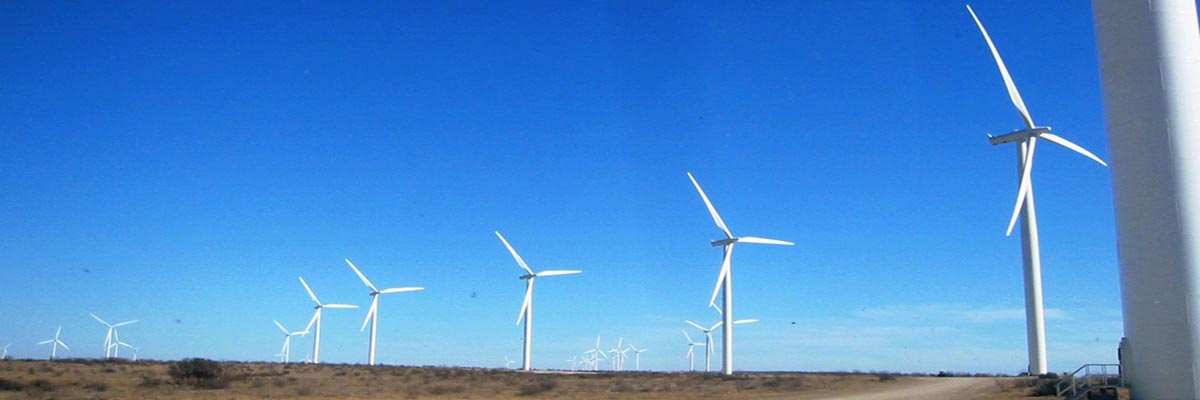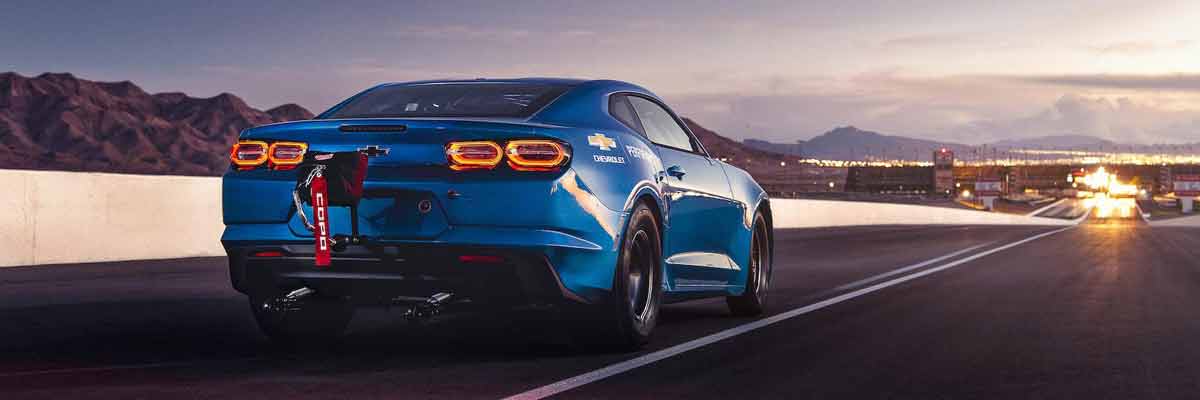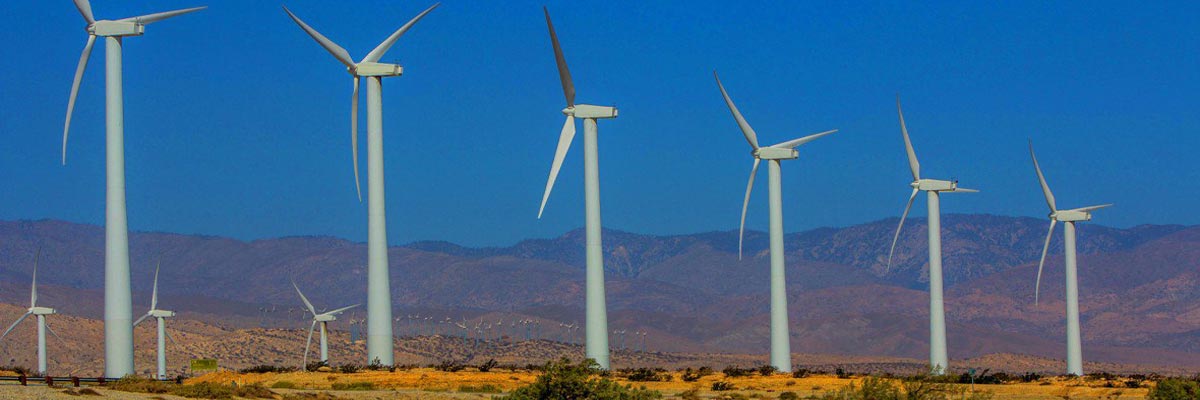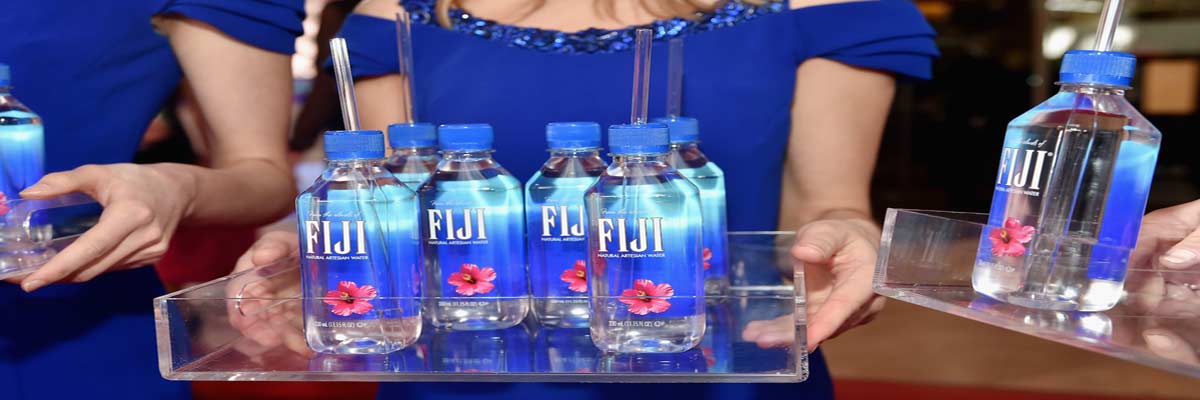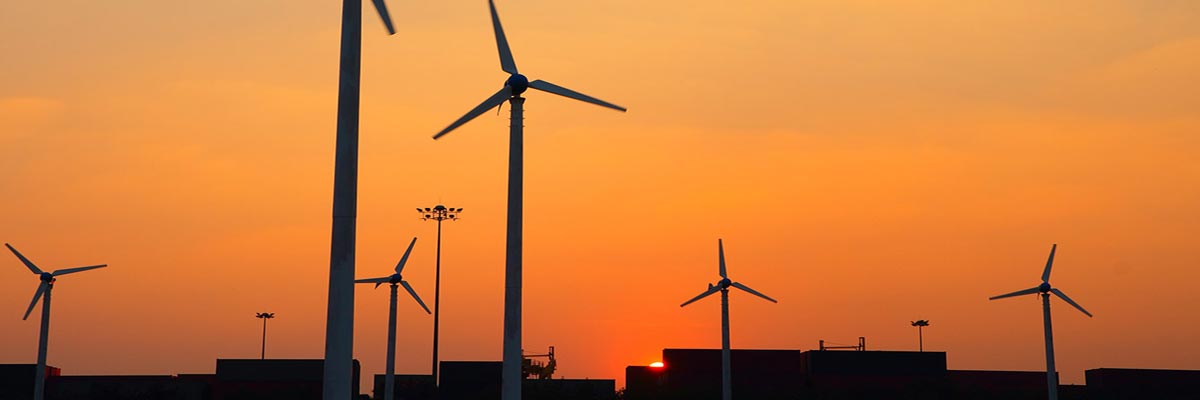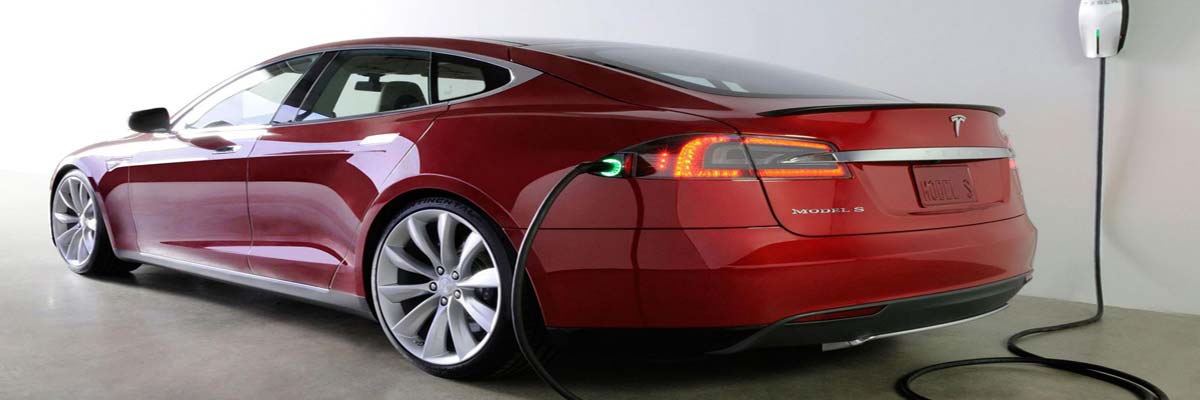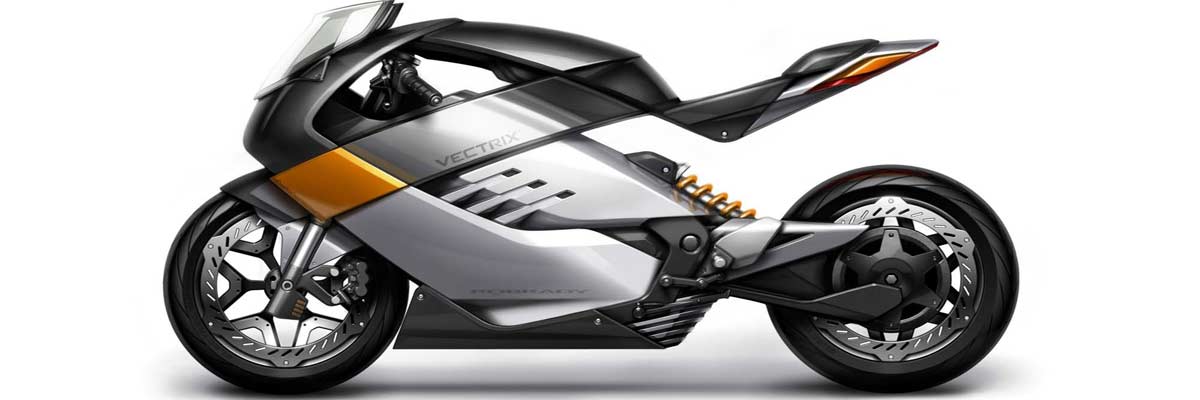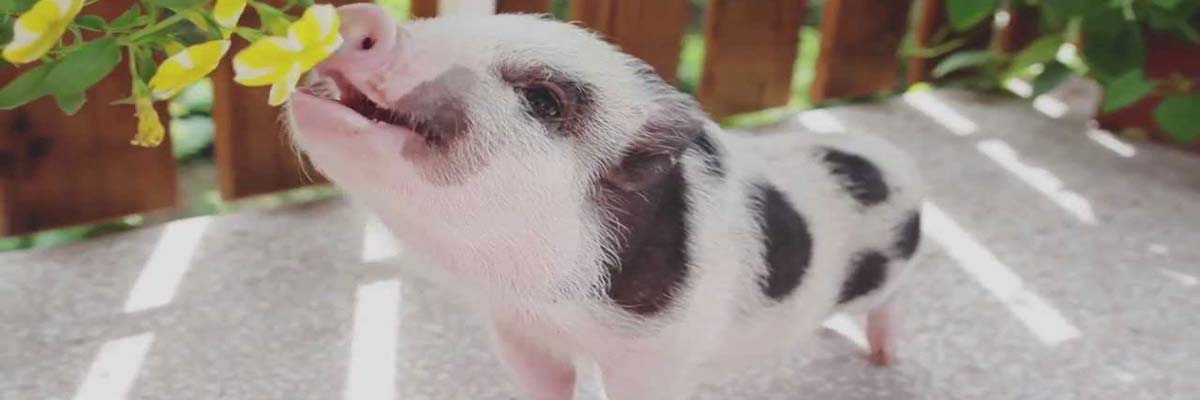Utah Residents and Businesses Do Not Own the Water that Falls on Their Property
Like Colorado, Utah has laws on the books that make it illegal to collect rainwater that falls on one’s property. A Utah car dealer installed a cistern and rainwater collection system to feed a on-site car wash that has water recycling technology. This was in an attempt to “go green”. He was thwarted by the state government, and eventually had to work out a deal. Local residents who collect rainwater will not be bothered at this point because “there are bigger fish to fry”.
It Is Time for the US to Sell Its Highways?
It’s difficult to imagine a person not having heard the old axiom “Buy low, sell high”, and it is prudent advice when you are making financial decisions. It’s the second part of that adage that might warrant a look at our strategy for infrastructure improvement in this country. If you are looking to make the maximum amount of money by selling something you want to sell that something when it’s at its highest value. I wonder then, is it time for our government to sell its infrastructure? You know, since the effects of Peak Oil are beginning to make themselves felt, the value of the infrastructure developed to serve cars running on cheap oil will decline each year into the future; starting soon. Selling high might mean selling soon.
Now, I don’t think we should sell all of it, by any means. We should keep the ports and the train lines, but is now a good time to start selling our roads, highways and airports? There has been news recently of other governments selling their infrastructure, and considering the value of these items in an energy scarce future I would contend that their value will never be higher. In fact, there is already plenty of news about airlines facing massive losses. (And starting to charge for baggage, pillows and normal drinks) How valuable will an airport be if we don’t have airlines? Or what if the ones we do have are marginally profitable? I say it’s better to sell now while the full force of Peak Oil hasn’t quite made itself felt.
An Interview With Bob Waldrop
This spring I had the pleasure of talking with Bob Waldrop as part of a series of interviews done for the forthcoming book A Nation of Farmers. Bob is a native, 4th generation Oklahoman, who was born and raised in Tillman County in southwest Oklahoma. His great-grandparents came to Oklahoma Territory before statehood. He is the founder of the Oscar Romero Catholic Worker House (which delivers food to people in need who don’t have transportation), the president of the Oklahoma Food Cooperative, and works as director of music at Epiphany of the Lord Catholic Church. He served on the founding board of directors of the Oklahoma Sustainability Network, and previously served on the Migrants and Refugees Advisory Committee of Catholic Charities. He is the editor of Better Times: An Almanac of Useful Information, which is distributed free. The 5th edition may be viewed at www.bettertimesinfo.org/2004index.htm. He is a member of the Oklahoma Food Policy Council. Although not presently active in the program, he has served as an Oklahoma County Master Gardener.
A big thank you to Sarah Louise Hartman for transcribing this interview.
Aaron Newton: Bob, could you describe the Oscar Romera Catholic Worker House, and the operations that you’re a part of there in Oklahoma City?
Eleven Year-Old’s Organic Veggie Stand Shut Down by California Mayor
I think that Joel Satalin can add another chapter to his book Everything I Want To Do Is Illegal after reading this story. I mean, really, a child’s veggie stand shut down for lack of permits? What’s next, no lemonade stands or car wash fundraisers?
ABC News via ABA Journal:
Call it a rite of passage: children by the roadside peddling their homemade goodies to adults who are more than eager to drop a few cents into a makeshift cashbox.
But Katie and Sabrina Lewis’ veggie stand, in the town of Clayton, Calif., where they sold homegrown watermelons for $1, has been shuttered by town officials who told the girls’ parents that their daughters’ venture violated local zoning ordinances.
“I think that they’re wrong,” dad Mike Lewis said of the town officials. “Kids should be able to be kids.”
Composting Organic Materials in a City
In my city our local waste management group picks up big plastic containers (which I call a Yardy) of yard waste material. This can be branches, leaves, grass clippings, etc. (Unbeknownst to my neighbors, I also pick up yard materials from their yardies, but that’s a different story…) Participation in this program is great, and it keeps all this material out of the land fill. The city mixes all this material together and turns it into compost which they then sell in 40 lb bags, or give away for free for personal use, if you have a truck to load it in. Paper products and kitchen waste can be recycled in our yardies, although almost no one knows that and it never seems to be highlighted.
San Francisco does a similar thing, although this Time article just mentions kitchen waste so I’m not sure about yard waste. I’m sure there are plenty of other cities that also do similar things.
Mileage Improvements By Driving Less And Driving Slower
Back in April, I began an exercise in driving less and driving with fuel economy in mind. What I learned surprised me. Simple, obvious steps made the most difference. I drive a 98 Oldsmobile Alero and before I began, I was getting about 27 MPG, now I am up to 34 MPG. That’s a 7 MPG savings, using simple steps anyone can do.There are groceries, banks and just about everything I need within walking distance from work, so as a rule, I drive to work, then I drive home and that’s it. I occasionally drive to run some errands (there is only so much walking one can do on a lunch hour).
I began turning off the car at train crossings, or when stuck in a traffic jam, but the biggest jump occurred after slowing down to 60 MPH. I went from 29 MPG to 34 MPG. That’s huge.
Also, I rode my bicycle over 120 miles in June, and I’m well on my way to matching that for July. That’s trips to the hardware store, bank, goodwill, and beer runs (all within about 3 miles of my house). At 34 MPG, bicycling alone has saved 3 1/2 gallons of gas, or almost a 1/3 of a tank. That’s amazing!
Base Jumping Off Of Wind Turbines Probably Not Legal
It was only a matter of time.
With most commercial turbines over 265 ft. tall, they were bound to attract the base jumping crowd. Thing is, they’re not the easiest things to get access to — so we’re wondering whether this crew has an inside man to let them climb to the top. Not to mention turn off the turbine for the jump. Nice view, though.
Peak Energy And What That Means For Food
Note: The following is a peak energy introduction written with Sharon Astyk for our forthcoming book, “A Nation of Farmers: Defeating the Food Crisis on American Soil,” to be published in the Spring of 2009 by New Society Publishers. This excerpt will be a review for those who follow her site and mine but might be interesting to those who have only recently become agitated by $4/gallon gas and who want to learn more. It’s very important that those of us comfortable with this topic help to shape the emerging conversation as one of opportunity not tragedy. No doubt this will mean doing things differently now and in our future but all is not gloom and doom. The rising cost of energy could be an opportunity to address big problems- a catalyst for positive change. With that in mind we must frame this not as ‘the end of the world’ but as the beginning of something better.
Peak Energy
“To alcohol- the cause of and the solution to all of life’s problems.?
Lego’s Windmill Set Allows You To Stick It To The Zoning Board
Town zoning board getting you down? Anti-wind organizations befuddling you with their concerns? Feeling the ache of not being able to install your own personal turbine? Well, now you can shut out the rest of the world and focus on this great new kit from Lego called “The Vestas Windmill Kit”.
Standing over two-feet tall, this model of alternative energy features a Vestas wind turbine, control center, and a van. But don’t expect to buy a bunch of these and string them up on your roof. While the turbine is motorized, it’s not generating its own power. That probably comes from batteries. Damn them!
Can the next Lego set please include a solar array to power this thing?
Still, I love it.
Don’t Pin Your Hopes on a “Green” Economy
Both presidential candidates have stumped for a new “green” economy. To me this smells of the supposed transformation to the “information economy” touted only a decade ago. Fortune had this to say on June 30th:
What senators McCain and Obama believe about U.S. energy policy matters – hugely. To fight global warming, the next President will oversee the transition to a new, green economy , which will result in one of the biggest business transformations of the 21st century and potentially one of the largest transfers of wealth since the creation of the income tax.
Cycling…
I used to ride a motorcycle. It was a Suzuki GS 1150. That’s 1,150cc engine with 123 horsepower. Since it only had to accelerate 500 pounds, it could go from 0 to 70 in less than 3 seconds and only one gear change, which I knew from personal experience. It was the kind of bike that taunted you, that dared you to ride fast.
There was a gas station near one of my favorite riding places that sold high octane racing fuel. I loved to fill up and go for a long twisty ride. The racing fuel had a different smell, it smelled like adventure.
Riding a motorcycle is such a manual process. Between clutching, shifting, accelerating and braking, you have to use both hands and both feet. You lean into turns. Riding involves your entire body.
My motorcycle riding days ended when someone made a right turn in front of me. I was enjoying a straight road to the maximum, went around a bend and right in front of me was a car, pulling into a driveway. I would have swerved into the left lane, but there was an on coming pickup truck. My only choice was to hit the brakes. I remember seeing the horizon fly past my feet, then I landed in the gravel on the other side of the car. I walked away with a sore wrist and a scratch on my right ankle. The motorcycle never ran again.
Creative, Eco-Friendly Custom Cardboard Coffins Are Just A Click Away
We’re all about choice when it comes to death here on GroovyGreen. Sure, you don’t have much say in how you’ll go, but you can definitely make sure your exit is packaged just right. Take for instance these eco-friendly custom cardboard coffins from Creative Coffins. Each one is made from 60% recycled paper plus wood pulp sourced from sustainable forests, contains only natural starch-based glues (no screws, bolts, tape, or other fittings), handles made from natural woven cotton, and is completely non-toxic. Better yet, you can have them custom designed — or choose from any number of beautiful designs already on the site.
My favorites are the “Gone To Seed” theme or the “Box of Candy” design — mainly because it would be really funny to see some kid’s face if they thought it was a giant box of candy. Ok, probably not.
In Colorado, Rain Barrels Are Illegal. Yup.
Yesterday, after I vented a bit on the lack of rain barrel options at Big Box stores, a reader tipped us off to a very interesting issue in her state of Colorado. Rain barrels there, you see, are outlawed. Colorado state law mandates that any water falling from the air is not yours. In fact, according to their site, its already been “legally allocated” — so, you don’t actually have any rights when it comes to using precipitation that falls on your property. Here’s the exact wording:
Colorado Water Law requires that precipitation fall to the ground, run off and into the river of the watershed where it fell. Because rights to water are legally allocated in this state, an individual may not capture and use water to which he/she does not have a right. We must remember also that rain barrels don’t help much in a drought because a drought by its very nature supplies little in the way of snow or rain.
Additionally, any and all water that comes from tap may only be used once. “Denver water customers are not permitted to take their bath or laundry water (commonly referred to as gray water) and dump it on their outdoor plants or garden.” Even if that said water is ecologically-friendly?
We’re not alone in thinking this is a stupid law. Last summer, The Colorado Springs Gazette said the following:
King Corn – Now Available via iTunes
The kind gentleman promoting King Corn (now out on DVD and iTunes) gave Groovy Green a complementary download of the movie via iTunes to review. I hadn’t seen the movie yet so it was a good opportunity to view the film and to try out watching a video via downloading.
First of all, downloading the film was fast and easy. I had iTunes downloading in the background while I caught up on my RSS feed, and was surprised by the speed in which the nearly 1 GB file was transferred. (For tech savvy readers: I have a high-speed cable connection, and run OS X 10.4.11 on a MacBook 1.83 GHz Core 2 Duo with 2 GB RAM). iTunes provides a quick and easy way to watch a movie. I think that this would be especially worth it on a long flight or trip. However I think that that is about the only way that it beats owning the actual DVD. There is no (legitimate) way to burn a iTunes download to a DVD to watch on your TV. Bummer. The $14.99 iTunes price did beat out the lowest DVD price that I could find at $17.99. One last benefit of downloading rather than purchasing the DVD is that is a much “greener” option. No energy or materials used to produce the media, nor fuel or effort to ship it. I imagine the trend will continue until DVD’s are things of the past.
Enough about iTunes movies, what did I think about the flick? I liked it. For those of you unfamiliar with the movie, here’s the summary:
McDonalds Creates Billboard That Actually Grows Lettuce
Not that there’s anything particularly healthy or worth promoting regarding fast-food chain McDonalds, but we have to give them credit for coming up with a very creative — and green — Billboard advertisement.
To get the point across that their salads are “really fresh”, McDonalds hired ad-maker Leo Burnett to deliver the message. So, he put together a billboad that over time grew lettuce to form the words “Fresh Salads”.
Wouldn’t it be cool if all billboard space was put to good use like this?
The History Channel’s ‘Life After People’ Confirms Our Insignificance
If you were to take the Earth’s current age and represent it on a 24-hour scale, the existence of humans would be indicated by roughly 30-seconds of time. That’s it. For all our hubris in celebrating our species rise above all others, we’re certainly an anomaly in the scheme of things. As indicated in the History Channel’s fantastic new documentary, Life After People, those 30-seconds of achievement can quickly be wiped away in less than half that time.
Last June, I wrote about a new book by Alan Weisman titled The World Without Us. In it, Weisman breaks down step by step what would happen to civilization if we simply vanished from the face of the planet tomorrow. For example, within about two days, New York City’s subway system would be completely flooded. Without power to keep the pumps running, the various tunnels and shafts would quickly fill by the region’s displaced underground rivers.
What the History Channel has done is basically used Weisman’s work as a script for a computer-generated look at the remaining vestiges of our society. We go all the way from one day to 10,000 years into the future. The visual effects used to represent the decay of our world and nature’s reclamation is stunning. As in the book, the film focuses in particular on New York City (as all good disaster flicks might) and does a great job of brining to life the various conceptual images that Scientific American presented to coincide with World Without Us.
“Human Footprint” Documentary One life. One Lifetime. What does it all add up to?
An amazing look at what the average Brit will consume and produce over their lifetime.
If these amounts are for the average UK resident, I can’t imagine the piles for an average American. It is worth bookmarking, and coming back when you have time to watch a few minutes worth.
How Much Food Does The Average American Family Throw Away Each Month?
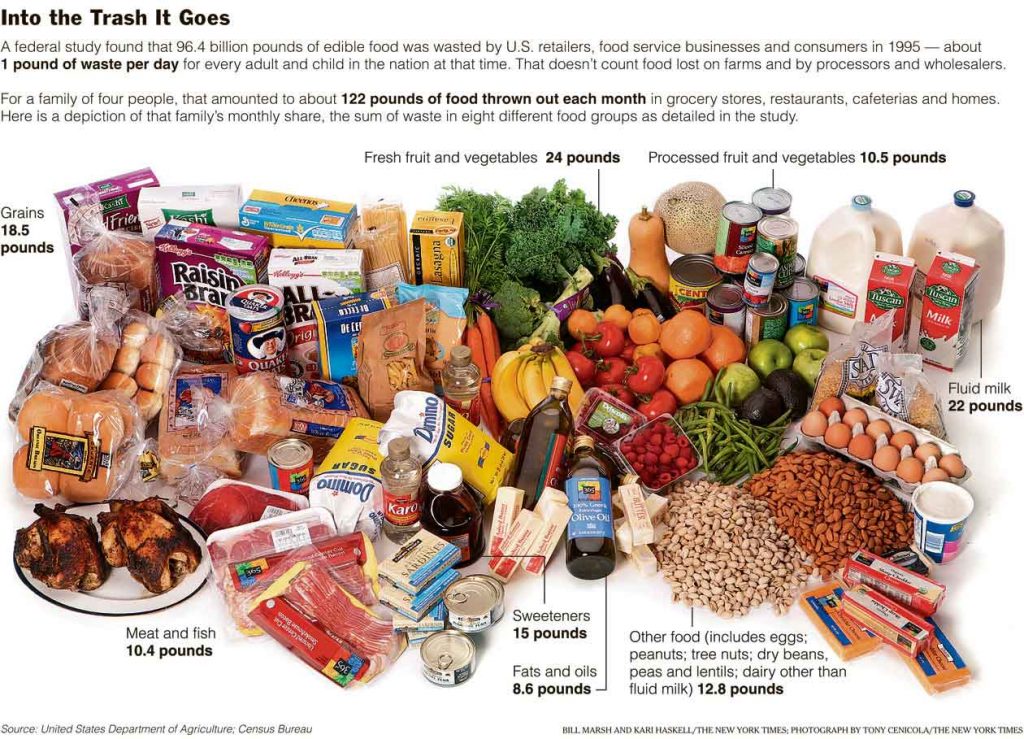
122 lbs. That’s how much enters the waste stream each month from the average American home (family of four). Ridiculous, sad, and incredible at the same time, isn’t it? A study conducted in 1995 estimated that 96.4 billion pounds of edible food was wasted each year — not to mention all of that probably went straight into the landfill. Imagine the recycled compost that could be generated from that!
The fascinating graphical representation of our monthly waste, as created by the NY Times, is shown below. Click on it to be taken to a much higher res, readable version.
Masdar City To Get Solar-Powered Personal Rapid Trainsit System
NPR aired the last episodes this week in their year long series titled Climate Connections by focusing on the new “zero-emissions” city being built outside of Abu Dhabi called Masdar City. With an expected population of 50,000 people, the “experiment” in green technologies and sustainable design will be the largest effort ever to create a carbon-neutral urban center. The project is the crown jewel in the Abu Dhabi’s amibtious plans to become the ‘silicon valley’ of the renewable energy world. The Middle East certainly isn’t naive when it comes to looking past oil for the future security of their economies.
One of the more interesting technologies being put into action in Masdar is the PRT — or Rapid Transit System. Designed to hold six people, these pods will travel to more than 1,500 stations distributed throughout the city. From the NPR clip,
Why Higher Gas Prices Are Making Me Smile
I’m not naive — I understand that there are severe hardships in store the longer the price of a barrel of oil soars ever higher. But here’s the thing. Every time I pass by my local gas station and see the numbers a couple cents higher than the day before, I smile. For some that might seem odd — and for those that depend on cheap oil, my sentiments are with you. Unfortunately for all of us, those unaffected and those in dire straits, this had to happen. As someone who champions sustainability day in and out, writes about political hangups to change America’s dependency on oil, and laments our lack of investment in renewable energies, this is a blessing in disguise. My only hope is that this continues — and is less of a “rubberband effect” we all experienced in the wake of Hurricane Katrina three years ago.
Why? Because if we are to shift to an economy that is truly self-sufficient and sustainable, we have to be hit hard collectively in the wallets. It’s the only way. As environmentalists, we can release movies, write articles, hold rallies, and buy all the green products in the world — but to to truly bear witness to real change, it has to come from those not directly involved. In other words, everyone must be faced with a burden. For some, climate change might be their burden and buying a hybrid vehicle or biking to work might be the solution. For others, higher gas prices which affect the bottom line might be their burden. In the end, what matters most is that it is a common hardship. Whatever the personal impact, the demanded outcome will be in unison.
Is It Organic? Where’s The Testing?
This is a guest post from Mischa Popoff who is an organic inspector. You can visit his site at Is It Organic. He raises some interesting points about the organic industry.
Organic food is better for you. Right? It’s more nutritious. It contains more vitamins, minerals and other good things like antioxidants, plus it’s fresher and tastier. Right?
Hold that thought.
Organic food is also more pure and natural. It contains far less harmful pesticide residues than conventional food. It’s also relatively free of herbicides, fungicides and other “cides” used extensively by conventional farmers. Right?
Again, hold that thought.
OB1: The Hybrid Electric Bicycle That Also Costs $13,000
We have a crush here on Groovy for electric-hybrid bikes. Personally, just knowing that I’ve got some assistance on the myriad of hills surrounding my town is a pretty sweet advantage. I’d pedal the other 90% of the time — which would be a hell of a lot better than taking my car the five or so miles to work. Plus, no sweaty nastiness on those host summer days.
Anyways, if you’re looking for the absolute pinnacle in electric-bicycle customization, the OB1 from Optibike is probably your best bet. From Gizmag,
“The key component of the Optibike system – the patented Motorized Bottom Bracket (MBB) which drives through the derauiller gear system to optimize acceleration and range at all pedaling speeds – is now oil cooled and delivers 850 continuous watts of power. Add to this carbon fiber handlebars, brakes, derailleur, chainring and cable ferrules, a customized paint job, GPS satellite navigation, plus a wireless PDA interface that provides real-time feedback on remaining range, battery charge and motor temperatures, and you have yourself one high-performance urban commuter.”
All Hail The New Green Browser: Flock Eco!
Earth Day is quickly becoming not only an event to celebrate the planet — but also to look forward to a number of cool green technologies that love to launch on this iconic day. Already today, I’ve seen two great new developments: One, is Sungevity— a great online tool for Californians that displays a satellite map of your home, calculates solar installation costs, and mockups of what your roof might look like with the panels. Should you decide to purchase, the company takes care of all the details — including all the zoning permits and install crews. You just need to sign the dotted line. Awesome.
Next — and this is one we’re most excited about — is Flock Eco, a brand new take on the Flock Browser that comes fully loaded with green content AND gives 10% back to environmental causes every time you browse. Now, even reading your favorite sites can help generate money for worthy organizations! From the release,
World’s Largest Treehouse Cost $7 Million To Build
Like something out of a fairy tale — and seriously, even the main character’s name is Lord Northumberland — this 6,000 sq ft. tree house is the world’s largest. Located on the grounds of Alnwick Gardens, about 95 miles north south of Edinburgh, Scotland, the leviathan soars 56ft. above the ground and is connected with 4,000-square-feet of suspended walkways. There’s even a 120-seat restaurant — as well as wobble bridges, classrooms, turrets, and God knows what else. Naturally, this building was also built sustainably with the website saying Canadian Cedar, Scandinavian Redwood and English and Scots pine were all used in construction. Unfortunately, it appears that most of those were imported, so no points for you! From the website,
“The unique dining experience on offer in The Treehouse is nothing if not unusual. The roaring log fire in the centre of the room, the living tree complete with green leaves growing through the restaurant, the fascinating craftsmanship which has created screens from fallen branches and the dimmed lighting combine to create an other-wordly, magical environment. The delicious menus include a fantastic range of locally sourced produce, helping The Garden encourage and support local producers.”
Filter For Good Earth Day Giveaway
The good folks at Brita have given Groovy Green two sets of a Nalgene Bottle and a Faucet Filtration System to give away to our readers in celebration of earth day, and as a part of their FilterForGood Pledge.
How to win: Leave a brief comment letting us know what you plan to do this Earth Day, and make sure that you tell us your email address (Email addresses are not posted online from the WordPress comment form, only the editors will see them.) Two lucky readers will be chosen at random from the comments.
Also, check out FilterForGood.com today!. Take their pledge to avoid bottle water and use a refillable container.
Feeding The Suburbs
This is the last story in our series from Wendy.
***************************************************************************************
This evening, after I read Andrew Lost on the Dog to Precious, I sat back in my bedroom and thumbed through the March/April edition of World Ark, the magazine published by Heifer International. What struck me as I read through the articles was the statistic “85% of all farms worldwide are smaller than five acres” (15). Several articles, cited the fact that most subsistence farms in Third World countries are very small – some even as small as mine.
I was surprised.
I have a book someone gave me entitled Five Acres and Independence. I’ve had it for a while, and having that book seemed to reinforce my (mistaken) notion that in order to be self-sufficient, I needed an acreage. I needed land, lots of land and the starry sky above ….
At any rate, a 1/4 acre wasn’t going to do it.
I didn’t know that a large portion of the world’s farmers are working land that isn’t much bigger than the average American suburban lot.
Love Thy Neighbor
Another in our series from Wendy.
***********************************************************************************************
I had a rather nomadic childhood. For the first eight years of my life, we moved at a rate of about once a year. Then, we were settled for about five years, but we moved again just before I started high school, and then, four years later, when I graduated from high school, I lived a transient life as a college student. Four years later, when I received my Bachelor’s degree, I moved for the next seven years, at about the same frequency as I did for the first eight years of my life – packing up my entire household and relocating every two to eighteen months.
Then, I moved with Deus Ex Machina, our two month old daughter, eight month old chow-chow puppy, and three year old iguana to Maine.
The Sustainable Suburbs: Self-Sufficiency
Another in our series from Wendy. This one is about being self sufficient on a small plot, and if you really need to be.
************************************************************************************************
Someone told me recently that I could never be self-sufficient on my quarter acre suburban lot here in southern Maine. I don’t have enough land, and I can’t build a greenhouse.
Maybe. Maybe she’s right. But just maybe ….
My hero, Dolly Freed, lived on a 1/2 acre 40 miles from Philadelphia. She and her father weren’t “self-sufficient”, in that they did depend on outside sources for electricity, water, some food items, and clothing.
The folks at Path To Freedom aren’t self-sufficient, either. They buy bulk grains for themselves, feed for their livestock, clothing, and toiletry item ingredients (they make their own, but don’t produce the ingredients on their land).
Both of those examples are people who have very little land, compared to, say the settlers in the late 1890s, who were given 160 acres, but both of those examples are also people who live with very few “modern” conveniences on very small pieces of land with very small sums of money. In fact, their incomes likely fall well below what is considered the Federal Poverty level, and by our money-centric standards should be living in squalor.
If you think so, please do spend some time at the Urban Homestead. It’s anything but squalor. They even have a televsion, although I don’t believe they watch it very often, and they, obviously, have an Internet connection. While you’re at it, you should also, really, try to find a copy of Possum Living. It’s amazing what can be done, and how little cash one actually needs to live a very fulfilling life.
The Sustainable Suburbs: Fowl Language
Another story in our series from Wendy. This one has some nuts and bolts about the cost of keeping chickens in your backyard.
************************************************************************************************
I live in the suburbs. Mine may not be a “typical” suburban neighborhood – my house was not part of a “planned” subdivision, although a subdivision plan was filed with the town for the road on which I live.
There’s also a planned subdivision across the road from me. The house lots are each a 1/2 acre. There’s another planned subdivision going in right down the road from me. I know the owner of the property. He’s my neighbor and owns the garden center next door.
About a 1/2 mile up the road from me is another family who also has chickens. I think they might also have bees.
This is a residential area. It’s a suburb. With the exception of my home business, the few other home-based workers and the garden center, there are no shops or other stores – just a bunch of houses from Route One until the grocery store that is the beginning of the town proper.
There Was No Fat Lady Singing
The next in our series from Wendy.
********************************************************************************************
We watched the movie The End of Suburbia last night. I’ve been waiting a long time to see the film, but after having seen it, I’m actually glad that I didn’t have the opportunity to see it sooner. I like the timing of it all. Here, I’ve planned this series of posts about why we should stay in suburbia, and then the movie comes in the mail. It seems almost too fortuitous, almost fated.
Deus Ex Machina wasn’t as enthusiastic about the movie as I was (when he saw what it was he grumpled something about it being more of that fundamentalist crap). I asked Deus Ex Machina what he thought about the film after we watched it, and his response was, “They didn’t say anything new.”
Basically, the movie was a history of how our country adopted a suburban mindset. The original idea behind the suburb was to give city-dwellers the opportunity to move outside of the crowded and dirty environment of the newly industrialized cities into a cleaner community, usually consisting of residential housing with no industry or retail outlets within close proximity to where people lived. The hope was to give people a “taste” of country living.
Pass The Scoop, I Likes Me Some Ice Cream With My Cake
The next in our series from Wendy.
***************************************************************************************
I was supposed to be commenting on the Suburban Lawn of the Future, but I’m having trouble with that topic.
Ask me why.
Okay, I’ll tell you.
I live in Maine, and right now we’re under a foot-deep, concrete-hard blanket of ice and snow, which is not unusual for February in Maine, but it makes thinking about what my garden might look like in the spring a little difficult. Some of my favorite bloggers are starting seeds right now, and from my experience as a gardener in this part of the country, it’s still too early to even do that. The traditional planting date for Maine is Memorial Day – still three full months away (and I learned the hard way not to flout the wisdom of waiting until then).
Instead I hope I can talk convincingly about why, if you already live in the suburbs, keeping your house is a better option than running wildly into the woods, and I’ll be making the assumption that your house in the suburbs carries a mortgage AND that if you found a house in the country, you would also have a mortgage.
In a survival situation, experts stress that the first order of business is finding shelter. Most people freak out and rush around trying to get food. Read More
A Rose by Any Other Name
The next installment in our series from Wendy.
***************************************************************************************
What is a suburb?
As I was thinking about this post, I started having a really hard time defining what a suburb is. I mean, we all know what it is, right? It’s a planned, homogenized community with plastic-looking houses and artificially green lawns sporting pink flamingoes and rusty swingsets.
But if my goal is to defend suburban life and explain why I think people who live in suburbs have as good a chance of surviving the apocalypse as the people in the country who have a bajillion acres of land and an abundance of natural resources at their disposal, or people in the city who can combine or eschew resources such as transportation and heating, I can’t very well use that definition ![]() .
.
I googled the term and found this definition: town or unincorporated developed area close to a city. Suburbs, since they are largely residential, are usually dependent on a city for employment and support services and are generally characterized by low-density development relative to the city.
I think that pretty well explains what a suburb is, but again, if suburban dwellers are “dependent” on the city for support services and employment, then any illusion of self-sufficiency is immediately negated, by definition.
In short, by using either definition, when it comes to the apocalypse, we suburbanites are screwed.
So, let’s focus on what suburbanites have that is unique to their particular habitat, and might, with a little imagination, be used to their advantage.
1. Suburban homes have a yard space, usually between 10,000 and 40,000 sq ft. Not a lot, but more sometimes just means “more”, which isn’t always better.
2. Suburbs are “close” to amenities. While “close” really is subjective, and some people would say that anything within a 50 mile radius qualifies, I (and most of my suburban neighbors) would classify close as within walking distance. It would take me two to three hours to walk to Portland. It would take about an hour to walk to downtown Biddeford (Portland and Biddeford are the largest and the fifth largest cities in the state of Maine, respectively).
3. Suburban homes are usually single-family homes. People who escape to the suburbs want to have some sense of privacy, but recognize that being interdependent might not be such a bad thing.
4. Suburbs do not, typically, have any businesses (except for the occasional “home business”, that usually doesn’t attract on-site clients).
In other words:
If you measure your property by square feet rather than acres, you might be a suburbanite.
If you need extra storage space to house your lawn care apparatus and outdoor furniture, you might be a suburbanite.
If you live close enough to school to walk, but far enough away for them to send the bus, you might be a surburbanite.
If the only bus that comes to your neighborhood is the school bus, you might be a suburbanite.
If you could walk to town for the gallon of milk you need, but choose to drive, because it’s more than a mile, and that’s just too far to walk with those little kids, BUT you don’t think twice about putting on your sneakers and dropping little Sally into the jogging stroller and walking around the neighborhood for some exercise, you might be a suburbanite.
If you drive more than two miles, but less than ten, to buy plastic crap from China, you might be a suburbanite.
If there is no “corner store” in your neighborhood, you might be a suburbanite.
If you’re close enough to see the dirt on your neighbors’ windows, but need binoculars to see what’s on their big screen television, you might be a surburbanite.
If there is anything called a cul-de-sac in your immediate neighborhood, you might be a surburbanite.
If you live in a cul-de-sac … you are a suburbanite.
Avoid the extremes and converge in the middle.
That’s the suburbs.
Suburbs are the happy medium between country life and city life.
Up Next: Mary, Mary Quite Contrary: The Suburban Lawn of the Future
Oh, Give Me a Home…
Wendy, who writes an interesting blog, has been working through the pros and cons of living in the suburbs as we approach the Peak Oil energy descent. What I find most compelling about his discussions is that she is like any of us. She’s struggling to figure out if the suburbs are her home, or if she needs a house and some land to survive. While she talks about it she walks you through her thinking. Whether you agree with it or not, she make some compelling arguments. She has been kind enough to allow us to bring her serious of posts over to our site to share with a bigger world, which I will be doing over the next few days.
*******************************************************************************************
Today was a holiday. Seriously. It’s like President’s Day or something, I think. Anyway, my client’s office wasn’t open today, which means my normal “work day” was spent doing not much of anything. I sat on the computer most of the day … well, not “on” the computer, because that would have been very uncomfortable, and, well, I’m not sure my computer would have been able to support my weight – not that I’m big or anything.
Monsanto, How Evil Are Thee? Let me Count The Ways
Vanity Fair has a great article on their site featuring one of our favorite corporate villains, Monsanto. It is truly astounding the amount of evil doing that this one company can engage in.
From a business standpoint Monsanto certainly has the right to patent their genetically modified seeds, and profit and protect their profits with litigation from their business developments. But they do not have the right to give us products that suck. Their products suck. They spread all over the countryside. They don’t stay contained. In short, they act like plants. (Amazing, I know)
Monsanto as a company lies, incredibly, about what they are doing. They bribe officials around the world and they seem to treat the world as their toilet. That’s not right for the rest of us.
Treepee: A Tent That Truly Belongs In The Trees
If you’ve ever wanted to avoid contact with earthly critters or simply understand what it’s like to be a piece of fruit, the Treepee looks to be a pretty good way to do it. Just hang the tent from a sturdy tree, secure the corners, and you’ll be swaying pretty. From the description:
Four tethers, one on each corner, allow the Treepee to be secured for a less mobile ride. Bug nets on the windows allow air to circulate without letting any little critters in. The fabric is fire retardant, water repellent and PU Coated. The fabric has a UV protection factor of 50+. There are pockets on the inside for storage and a bag on a pulley which allows essential supplies to be hauled up into the ‘den’.
Want one? Start saving — the thrill of hovering will cost you about $600. But hey — at least you’ll be safe while your friends are carried away by fire ants.
Tapping Trees For Diesel Fuel
Australian farmers are embarking on a bit of an experiment to see whether or not they can self-sustain their production using diesel-producing trees. As some may know, I have a bit of a love-affair with plants that can produce — in one way or another — biodiesel. For those looking for an update to my “Adventures In Sustainability” series growing Jatropha — it’s coming soon. The plant is currently in hibernation. But I digress…
The diesel-producing trees are called Copaifera langsdorfii and are native to the Brazilian rainforest. The world has known of their unique properties since about the seventeenth century, but it’s only been recently that harvesting of the petrol is being planned on a grand scale. From the article,
Nobu Sushi Restaurants Use Fiji Bottled Water To Boil Rice
I shouldn’t be surprised. And yet, when I read that Nobu Matsuhisa — owner of the Japanese restaurant chain Nobu — uses Fiji Water to boil rice, I nearly laughed out loud. That was immediately followed by reverence for the power of branding; and lastly, slight depression over the mind-fuck given to the world courtesy of bottled water.
That glimpse into Nobu’s massive love for one of the fastest selling bottled water brands in the world came from an excellent article detailing the success and origin of the Fiji water label. Here’s a highlight:
Another golfer caught his eye and Gilmour watched as the man took a long drink from a European bottled-water brand. How bizarre, he thought, to come to a place like Fiji, where the water is famously pure, and choose to drink a European brand instead of the better and more available local stuff. Inspired, Gilmour founded a production company and signed a 99-year deal with the Fijian government to tap an ancient aquifer on the main island of Viti Levu. He called his brand Fiji Water.
The Green Picture: Amazing Recycled Drift Wood Horses

If you looked quick enough, you might be mistaken that this is a real horse. Instead, it’s a sculpture put together with pieces of recycled driftwood. The work is the result of artist Heather Jansch — who specializes in art created with driftwood and bronze.
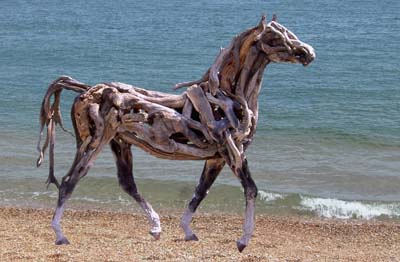
The Green Picture: The Lexus Of Human-Powered Bicycles
The Rhoadescar is one of the swankiest human-powered two seaters I’ve seen yet. Especially with the top up to keep the rain/sun out. Granted, you probably won’t fit in the bike lane — and the highway will be a bit of a challenge, but I did it nonetheless.
The Selsam SuperTurbine Will Submerge During Rough Seas!
The Selsam SuperTurbine is one of the best designs I’ve seen yet for a wind turbine that can survive the hostile open seas. It also looks like it might be a bit of a bitch to navigate through with a tanker — not to mention the description states “the SuperTurbine probably won’t sink a vessel.” Makes you feel warm and cozy inside, doesn’t it? Still, based on designs, it looks like the pitch of the turbine should be high enough to keep you safe.
The advantages of this design are many. First, during large and fierce storms, these deep water turbines may intentionally lay down by flooding chambers, or even completely submerge to survive. Bonus! Second, flotation near the surface forms a fulcrum, with the weight of the rotors and driveshaft balanced by a downward force from the mooring below. According to the site, this allows the turbine to bend similar to arching your back to take advantage of wind patterns much more easily. Additionally, the rotors can be staggered, spiral, or in line.
World’s Largest LED Chandelier Is Beautifully Green
Behold! The wonderful efficiency of next-gen LED lighting is now being integrated with the grandeur of luxury illumination — specifically, massive chandeliers. Even more specific – the world’s largest chandelier currently installed at the Stanley theatre in Utica, New York.
This chandelier — weighing in at almost 7,000 pounds, 35 feet in diameter, 17 feet tall — uses 328 LEDs manufactured by Philips Luxeon and consumes just 1,120 watts of electricity. That’s almost seven times more efficient than conventional light bulbs. Not to mention the fact that will be many years before workers have to replace any of the bulbs due to burnout. Unless, of course, the Phantom has anything to say about it.
Damn Phantom.
Boycott The 2008 Beijing Olympics
Later this year the 2008 Olympics will open in Beijing, China. When that happens, a country with both serious environment problems and a pattern of widespread social injustice will be given international attention. If the Chinese government has its way, that country will not be portrayed as a contaminated badland where political repression and established censorship smothers its citizens. It’ll be best faux foot forward as the world looks on, or perhaps better phrased, looks away as a deeply flawed nation tries to avoid criticism for its abominable record on the environment and human rights. The International Olympic Committee opposes a boycott as does the Bush Administration. And you can be sure that corporate sponsors of the Games will not advocate such a move unless more consumers, or ah citizens support a boycott. Until then they “are trying to appear sensitive while arguing that the Games should not be politicized. So much for corporate leadership. Again it looks like no real change will happen unless public sentiment develops in support of directly addressing the record of China and its policies of devastation during past decades.
Eco-Libris, Plant a Tree for Every Book You Read
According to the Eco-Libris 20 million trees for virgin paper used for the production of books sold in the U.S. alone. That’s a lot of trees… In an effort to help you pay back Mother Nature, Eco-Libris will plant a tree for each book you decide to ‘balance out’. Planting 10 trees costs $10, to ‘balance out’ 10 books. Eco-Libris works with planting partners to plant trees in developing countries.
“Our planting partners are organizations that work in developing countries. Their planting and conservation activities are an integral part of their efforts to help local communities in these countries move towards a sustainable future. We make sure that your trees will be planted where they provide significant value for both the environment and the local communities, who are very much involved and play an important part in the planting projects.”
For every book you ‘balance out’ you receive a sticker made of recycled paper, to mark the book as part of you effort to act in a sustainable way. When you are done reading the book trade it on BookMooch.
Tesla Gives Us A Magical Mystery Tour Of Lithium Battery Recycling
One of the largest misconceptions of electric cars is that the world will suddenly be inundated with toxic batteries that will seep into ground water, kill your dog, and practically ruin your marriage. Fortunately, battery recycling for green vehicles has been well planned out — even if there currently aren’t many electric-powered cars on the road to be concerned about. Showing us exactly what is possible, Kurt Kelty — an engineer that works for Tesla Motors — recently posted an interesting “Mythbusters” segment on battery recycling — what they’re made of and how they’re disposed of.
Some fascinating tid-bits: First, the Tesla Roadster’s battery pack or Energy Storage System (ESS) contains no heavy metals or toxic materials. By law, this means they could technically be disposed of in a landfill with no problems. However, their usefulness extends beyond pushing a car 0-60 in less than 4 seconds. Apparently, there are major differences in the demands on a battery for use in a high-performance sports car unlike, say, providing backup for a solar array. In fact, once the lithium packs are no longer performing well for the roadster, they may be recommissioned to be used as a power source for off-grid backup or load leveling.
Electronic Tattoo Display Draws Energy From Your Blood
We’ve all heard of alternative sources of energy from sunlight, water, and wind — but how about blood? An inventor by the name of Jim Mielke has created a bluetooth-ready, wireless, blood-fueled display that uses tiny microscopic spheres, somewhat similar to tattoo ink, to display images. Here’s how it works:
The basis of the 2×4-inch “Digital Tattoo Interface” is a Bluetooth device made of thin, flexible silicon and silicone. It´s inserted through a small incision as a tightly rolled tube, and then it unfurls beneath the skin to align between skin and muscle. Through the same incision, two small tubes on the device are attached to an artery and a vein to allow the blood to flow to a coin-sized blood fuel cell that converts glucose and oxygen to electricity. After blood flows in from the artery to the fuel cell, it flows out again through the vein.
Cutting Down on Cooking Costs: Green SAHM’s Got Some Tips
Green SAHM is one of my favorite blogs in my RSS reader. Her latest post is on saving energy when cooking. Tips vary from keeping a lid on the pot on the stove, to analysis of energy costs of different cooking methods (microwave, electric oven, gas oven, slow cooker. Definitely worth a look!
From How to Use Less Energy While Cooking
The Dog-Powered Recumbent Trike Harnesses Man’s Best Friend
We’ve heard of dogs dragging humans through the wintry depth of the Alaskan wilderness, but this is the first engineered dog-powered trike I’ve ever laid eyes on. Inventor Mark Schuette expanded upon the idea of the dog-powered scooter (yes, it too exists) and used the “dog behind a steering wheel” configuration with ‘the added stability offered by a sit-down trike design and twice the steering power and braking power of the scooter.’ From the article,
The original scooter enables the human to ride standing up whilst the dog is harnessed into a frame and subject to steering and braking. As the scooter requires the rider to stand upright and balance it was not particularly appealing to some users (such as the elderly or physically handicapped). The new trike adopts a tadpole design (two wheels in front) and has a harness space for a dog on each side of the rear wheels. Schuette’s inventions are the first dog pulled devices to place the dog behind a steering wheel. This is designed to give the rider precision steering control of the dog making it easier and safer to ride in an urban environment.
It should be noted that while there are two spaces for more than one dog, it’s not absolutely necessary to employ 8 paws of power. Additionally, the human-powered pedal option means Fido and Spike won’t have to drag your ass around all by themselves. There’s also a fender kit included to protect the pooches from coming into contact with the rear spokes; or I imagine small rocks and such.
Leave This World In An Eco-Friendly Shell
Here’s an interesting concept from Lots Design called The Shell. Basically, it’s an eco-friendly urn created from bio-degradable pressed paper. Not only can loved-ones leave messages by writing on the outside, but there’s also a small pocket on top for personal notes and trinkets. Once placed into the ocean, the shell over time will waste away, leaving all but a memory. Plus, it looks likes the spacecraft from Flight of the Navigator. Bonus.
Green Ideas We’d Like To See: The Electric Super Tipper Truck
As a kid, no sandbox was complete without a fleet of Tonka dump trucks. Today’s kids have much cooler options; particularly if this design from Haishan Deng makes it from the drawing board and into the real world. It’s called the Super Tipper Truck and features independent suspension and electric motors in all four wheels. This allows for greater versatility in loading and unloading positions; as well as the ability drive down into pits and deliver cargo — something normal tipper trucks would have difficulty doing.
For more details, as well as a great in-depth interview with the designer, head on over to gizmag.
Beijing’s Olympic Aquatic Centre Is A Green Wonder
Just in time for the 2008 Olympic games in Beijing, the official grand opening of the Olympic Aquatic Centre took place this past Monday in celebration of its unique architecture and eco-friendly characteristics.
The building, four years in the making, is nicknamed the “Water Cube” and is a rectangular-shaped steel design covered by a membrane of brightly lit blue bubbles. Not only are these stunning to look at, but they also serve an important purpose in reducing energy costs by 30%. The membrane is made out of a material called ETFE, (Ethylene Tetrafluoroethylene) which absorbs solar radiation and reduces thermal loss. Very similar, I suppose, to the way a solar cover works on a pool.
Not only is ETFE recyclable, but it’s also very strong; capable of bearing up to 400 times its own weight. Gizmag fills us in on additional details,
Green Roof Proposed For Stretch Of California Highway
This sounds like a wonderful idea — if anyone happens to have $200 million lying around.
A plan has been submitted to cover a stretch of California highway with a 24-acre park. It would be built on a deck constructed over the below-grade portion of the Hollywood Freeway (US-101). Organizers argue that by placing a “cap” over one of the world’s most congested freeway systems, the necessary ventilation system would clean the air before re-circulating it back into the environment — creating a positive improvement in air quality for LA. Additionally, the park would also provide a nexus between East Hollywood and Central Hollywood–”alleviating the strain on the community from the initial creation of the freeway through this section of Hollywood.” From the site,
Growing Power-An Urban Agriculture and Education Center
A few friends of mine from the fledgling Sustainability NPO we recently founded, Sustain Jefferson, spent a few incredible hours touring Growing Power this past Monday. Growing Power is a non-profit Urban Agriculture and Education facility in Milwaukee, WI that claims to grow enough food for 2000 people on 2 acres. With a claim like that I was drawn like a moth to flame. Their website offered some clues to their system-vermiculture, aquaculture, and several greenhouses. The actual tour filled in many of the details and inspired me in a way that I haven’t experienced since I was originally introduced to Permaculture and Bill Mollison several years ago.
What excited me most about Permaculture was the sheer common sense of it all. Taking wastes and turning them into resources is not something we typically think of today. Just as Forests have no waste products, Permaculture strives to promote such perfect systems in human endeavors whether it be designing a garden or linking businesses together via Natural Capitalism. Using the waste of built systems to add energy to another allows you to drastically reduce your time and energy taking care of problems and reap the benefits of one integrated system working in concert is something that continues to fascinate me Aquaponics, especially in the uber simple system that Will Allen of Growing Power sets up, fits the bill perfectly.
Eco Sac: The Water Bladder For Your Home
If giant rain barrels aren’t aesthetically pleasing or you lack the room for installation, you may want to consider the Eco Sac; a flexible rainwater bladder storage system that hides away under decks or floors. Each sac is manufactured using “industrial strength fabric sealed by high frequency welding.”
According to the site, the eco sac is better than your average rain barrel because a.) it captures water faster than rigid tanks, b.) you can use multiple bladders which all fill at the same rate and at the same time c.) it is guaranteed not to leak and d.) it is algae resistant and the water stored is potable.
Pretty cool idea for those with limited space to capture rainfall. There are 54 different sizes to choose from, ranging from 2,200 liters to 8,600 liters. Apparently, you can join multiple sacs together to get up to 50,000 liters or more water storage.
Much like the portable grey water recycler we wrote about earlier this week, this product is currently only available in Australia. Something tells me however — with the water woes currently affecting parts of the U.S. — that we’ll be seeing more of these stateside shortly.
How-to Video on Natural Earth Plastering at Dancing Rabbit TV
I caught this video today over at Dancing Rabbit TV. It’s a great look at building your own earthen walls. Head on over for a look:
Part I
The Top 5 Nastiest Creatures Getting Stronger Due To Climate Change
When some people think of Global Warming, a vision of comfortable winters, more days at the beach, and less sweaters comes to mind. For those living away from coastal regions, the concerns of hurricanes or sea levels is non-existent. Out of sight, out of mind.
The realities are that climate change will affect each and every one of us. From the ways our communities rely on food produced in other states and nations; to the costs of energy and sourcing of water. But it gets worse. Much worse. We now present to you The Top 5 Nasty Creatures Getting Stronger Due To Climate Change. Some of them seem straight out of science fiction.
The Goat Justice Leage – Fighting for Ruminate Rights!
In recent news from the Seattle Times:
Thanks to the work of the Goat Justice League, ruminants now have the right to life and limited liberty in Seattle.
On Monday, the City Council acknowledged the miniature goat’s attributes as human companion, weed whacker and milk maker, and unanimously voted that the goats could be kept as pets.
“One small step for man, one giant step for goatkind,” said Councilmember Richard Conlin, who sponsored the legislation.
As of late, goats have gained the environmental status of hybrid cars and bovine-growth-hormone-free milk, prized for their ability to mow lawns without using fossil fuels. University of Washington and Seattle City Light recently hired herds to clear slopes of blackberry brambles.
Monday’s vote marked yet another gain for miniature goats, which are about the size of a large dog. Also known as pygmy or dwarf goats, the animals weigh between 50 and 100 pounds and grow to about 2 feet tall. Owners keep them as pets and sources of milk.
I live in a city just outside of Seattle. Recently our fair city adopted Seattle’s domestic animal regulations. This was a big step for our city and the adoption allowed me to keep chickens. Hopefully this change in the regulations in Seattle will filter out into other cities.
My first thoughts of the Goat Justice League:
Is Iron Fertilization The Key To Preventing Global Warming?
Give me half a tanker of iron and I’ll give you the next ice age so said oceanographer John Martin in a famous speech to colleagues during the 80s. Martin was referring to the process of “iron fertilization”; which when applied to the oceans in slurry form promotes vast blooms of algae. The algae in turn consume carbon dioxide as they grow; thus removing more from the atmosphere and preventing climate change. Problem solved? From the article,
“‘There are many critical questions that require both better scientific understanding and an improved legal, economic, and political framework before iron fertilization can be considered either effective or appropriate,’ said Ken Buesseler, a senior scientist in WHOI’s Marine Chemistry and Geochemistry Department and a participant in two iron fertilization experiments at sea. ‘The time is right to bring scientists, policymakers, and commercial interests together to inform each other and the public.”‘
Though common on land, dissolved iron is rarely found in the oceans. This may be for a good reason as no one is exactly sure what massive blooms of algae would do to ecosystems. The Woods Hole Oceanographic Institution (WHOI) is holding a conference this week to determine the benefit of iron fertilization and if it may indeed prove to be a safe, cheap, counter-attack to climate change.
While it’s great to have these weapons in hand, the real silver bullet in preventing pollution and catastrophe is to address our own emissions and practices.
Wal-Mart to Sell Only Concentrated Laundry Detergent
It’s been a busy week for the happy smile, but Wal-Mart released a press release stating that they are going to start selling laundry detergent in concentrated amounts only.
From the article:
Wal-Mart expects to sell only concentrated detergent in all of its U.S.
stores by early May 2008 — more than 800 million units over the next three
years. The transition will occur in waves beginning in the Southern region
in October, extending to the North and Midwest by February and finishing in
East coast states in April 2008. (I assume this should be 2009 but it was like this in the article.)
Read More
The Pentagon Is The Largest Consumer Of Oil In The World
Some interesting facts to pass along regarding the US Military and its consumption of oil. According to a Energy Bulleting report from earlier this year, the Pentagon is the world’s largest consumer of oil. In fact, there are only 35 countries (out of 210) in the world that consume more oil per day than the Pentagon. Here’s the breakdown:
>>Fiscal Year 2006 the Pentagon consumed 320,000 barrels per day of site delivered oil, compared to about 360,000 barrels per day in 2005. While consumption may have gone down, prices skyrocketed from $8.5 billion in ‘05 to $17 billion in ‘06.
>>These figures do not include oil for “fuel obtained at no cost overseas, fuel consumed by contractors, fuel consumed in some leased and privatized facilities, and not last but least oil consumed by certain leased and rented fleet vehicles.”
Read More
I Ride My Bike
Enough with the gloom and doom over peak oil and climate change you say. You want an empowering story of change? Alright here’s an example of a personal adjustment I’ve made in my own life in an attempt to address both the above events because after all, the basic answer to both peak oil and climate change is roughly the same. Stop using fossil fuels; or at least cut way back on using them. But that’s so hard everyone says. It can’t be done. Nonsense. Or as Tom Athanasiou recently said, Change is necessary and because it is necessary it is possible.
I decided 2007 would be the year I got rid of my car. Not completely, but I’ve known for some time that driving a car keeps me dependent on the oil economy and pollutes this planet. I’ve known I needed to cut back on my automotive oil addiction. But it wasn’t until 2007 that I got serious about making change. Here are the numbers for the year so far.
Grooming The (Gen Y) Consumer Generation
As I prepare to head back to school, I’ve been thinking about how interesting it will be to interact with the next generation of students. Many of them will have grown up with the ability to log on to the internet and gain instant information, the ability to contact friends and family at a moments notice, and an overall different perspective on life. Not that I am that much older that they will be, but 10+ years is difference enough to grow up with a completely different set of ideas, beliefs and interests.
I came across a blog post that gives me pause, however. I wonder how many of these students will have spent a lifetime being groomed to grow up and be consumers.
This past weekend I had the occasion to visit a dorm at George Washington University. I hadn’t been in a dorm in years and was shocked at how nice it was. Each room in this particular dorm had its own kitchenette and bathroom. Some rooms have their own washer and dryer. Apparently, this is the norm. When I was in college we were crammed into tiny rooms with no amenities and sharing a bathroom with 6 other girls was the norm. We shared the laundry room with the entire dorm.
Apparently, today’s college students have grown up with certain standards and aren’t going to lower them just because they are in college and away from the comforts of home. In fact, they expect those comforts to follow them there. When deciding where to go to college, dorms and dining halls play as much a part as do the classes and football team.
The Venturi Astrolabe: A Street-Legal Formula One Solar Car
With a top speed over over 70mph and a range of almost an equivalent amount, the Veunturi solar car allows you to draw stares while commuting to work in Formula One style. 3.6 sqm of photovoltaic cells operating at 21% efficiency work to power what is considered the first ever commercial vehicle that’s capable of using absolutely no fossil resources. From the site,
“Capable of working with very little energy (16 kWc motor) and of recharging even when in motion, this vehicle of another era does not need to be permanently exposed to the sun in order to move. Its last-generation NiMH Venturi NIV-7 batteries ‘liquid cooled’ in fact enable it to restitute stored energy, whether solar or from the electricity supply, making it the first electro-solar hybrid vehicle. To attain this level of performance while using very little energy, Astrolab has been designed like a Formula 1 : its carbon monocoque chassis is ultra-light and serves as an oversized protection cell ensuring the safety of its occupants in the event of a collision. Its profile recalls the aqua-dynamic design of great racing yachts.”
Yum.
The PowerLeap: Harnessing Human Energy With Floor Tiles
Our friend Ruben Miller sent us an email on an alternative energy concept him and his wife submitted to the Metropolis’ Next Generation 2007 competition and we think it’s pretty cool. While the idea of harnessing human energy has been around for awhile, this one actually seems feasible. From the article,
“Imagine a nightclub where dancers generate the venue’s electricity just from the impact of their steps. With Redmond’s innovative flooring system, this vision of a human-powered energy source may be close to a reality. The floor tiles, cast in durable concrete and recycled glass, are fitted with piezoelectric brass-reinforced ceramic plates covered in nickel electrodes. With the impact of each footstep, a metal pointer inside the tile compresses the ceramic plate, generating an electric impulse. The resulting voltage activates four LED lights, visible through the glass surface, allowing energy-generating participants to see the power of their steps.”
This type of technology is intended for high-traffic areas; sidewalks, playgrounds, school hallways, etc. Obviously, you could do away with the LED lights and incorporate the idea into flooring that makes the whole thing less obvious. We love the concept, however, and hope Elizabeth and Ruben keep pushing to make it a reality.
The 4 Day Work Week
The notion of our standard work week here in America has remained largely the same since 1938. That was the year the Fair Labor Standards Act was passed, standardizing the eight hour work day and the 40 hour work week. Each Monday, Tuesday, Wednesday, Thursday and Friday workers all over the country wake up, get dressed, eat breakfast and go to work. But the notion that the majority of the workforce should keep these hours is based on nothing more than an idea put forth but the Federal government almost 70 years ago. To be sure it was an improvement in the lives of many Americans who were at the time forced to work 10+ hours a day, sometimes 6 days of the week. So a 40 hour work week was seen as an upgrade in the lives of many of U.S. citizens. 8 is a nice round number; one third of each 24 hour day. In theory it leaves 8 hours for sleep and 8 hours for other activities like eating, bathing, raising children and enjoying life. But the notion that we should work for 5 of these days in a row before taking 2 for ourselves is, as best I can tell, rather arbitrary.
The idea of a shorter work week is not a new one to anyone old enough to have lived through the energy shocks of the 1970’s. It should be fairly obvious to anyone interested in conserving oil that reducing the number of daily commutes per week would reduce the overall demand for oil. There are about 133 million workers in America. Around 80% of them get to work by driving alone in a car. The average commute covers about 16 miles each way. So let’s stop and do some math:
The Not-So-Green Picture: First Air Conditioned Bus Station
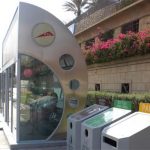 Dubai is boasting of their latest creation: the first air-conditioned bus station in the world; ironically located next to some recycle bins in this photo. Instead of employing some green building techniques to reduce the heat, the affluent country opted instead to build an energy-hungry haven instead. Not only that, but more than 800 of them are planned in the coming years.
Dubai is boasting of their latest creation: the first air-conditioned bus station in the world; ironically located next to some recycle bins in this photo. Instead of employing some green building techniques to reduce the heat, the affluent country opted instead to build an energy-hungry haven instead. Not only that, but more than 800 of them are planned in the coming years.
UPDATED: Making Homemade Laundry Soap
Last night after cooking supper I decided to cook up a batch of laundry soap. A friend had sent me the recipe for homemade laundry soap a while back and I’ve been anxious to try it since. I followed the recipe shown here (if you check the comments there is even one for a dry laundry soap.)
 First things first, I got some water boiling and started to carve up the bar of soap. We used Caress, which I don’t recommend, the smell was overpowering. And it reminded me of my grandmother too much. If you purchased a bar of eco friendly soap you’d be in even better shape. Or a local bar of soap would be good too.
First things first, I got some water boiling and started to carve up the bar of soap. We used Caress, which I don’t recommend, the smell was overpowering. And it reminded me of my grandmother too much. If you purchased a bar of eco friendly soap you’d be in even better shape. Or a local bar of soap would be good too.
Solar (Assisted) Electric Boat Navigates the Erie Canal
This news story caught my eye during the busy month of August. While electric cars have been the talk of the green blogosphere over the last year, this is the first instance I’ve heard of electric boating.On August 12, the Tamarack Lake Boating company launched “The Loon” a pontoon boat with 738 watts of solar panels mounted on its cover, and a 30 mile range on its 48 Volt deep-cycle battery array. (Syracuse.com)
With the flick of a switch, Canadian boat builder Monte Gisborne turned on his solar-powered pontoon boat, The Loon, and quietly slipped out of Oswego Harbor.
“It’s beautiful. It’s my first time on this canal and it’s beautiful,” Gisborne said as The Loon approached the Minetto Bridge. “The sky is clear, there’s a nice breeze blowing and people along the shoreline are waving I couldn’t be happier.”
The 12-day journey will take the Gisbornes – Monte is accompanied by his wife, Denise,
Read More
Excess Nightime Grid Energy Could Power More Than 70% Of Electric Vehicles
According to a recent U.S. Department of Energy study, there is so much excess energy on the U.S. grid nightly that if every light-duty car and truck in America today used plug-in hybrid technology, 73 percent of them could be plugged in and “fueled” without constructing a single new power plant. So much for the myth that electric vehicles will cause more emissions.
The Portland Press has a great article on the potential benefits of harnessing this excess energy and making the switch to plug-in vehicles. Apparently, each night there is a large amount of renewable power generation capacity that sits idle. Tapping into this source by plugging in our vehicles at night would harness a vastly unused portion of the U.S. grid. From the article,
“Studies have shown that plug-in hybrids produce at least 67 percent fewer harmful emissions than a standard gasoline-powered car. Even when accounting for emissions from the production of electricity, national studies have shown greenhouse gas production would fall by almost 40 percent if plug-in hybrids became commonplace. Plug-in hybrids could easily be expected to get over 100 miles per gallon of gasoline, and owners would do most of their refueling at home where the equivalent cost of electricity is about $1 per gallon.”
300 Organic Gardening Tips
If you are just getting started with organic gardening perhaps you should look over these tips to help you get started.
Some of my favorites include:
Mulch your flower beds and trees with 3″ of organic material – it conserves water, adds humus and nutrients, and discourages weeds. It gives your beds a nice, finished appearance. (mulching is sooo important)
Think “biodiversity”. Using many different kinds of plants encourage many different kinds of beneficial insects to take up residence in your yard.
To deter deer from grazing in your landscape, try placing strongly scented bar soap, or human hair, around your plants. The hair can be “recycled” from a salon or barber shop. (this doesn’t work for Iowa deer, but maybe others)
Preparing Australian Agriculture for Rising Energy Costs and Water Insecurity
Don’t let the common first name confuse you. The following is a guest post by Aaron Edmonds. Aaron was a 2002 Australian Nuffield Scholar and researched how broadacre agriculture was going to need to adapt to manage the follow through effects of the Peak Oil crisis. Ironically this Scholarship was initially established by the philanthropist Lord William Nuffield, the inventor of the Morris Minor car, where after the Second World War he saw food supplies dwindle to dangerously low levels in the UK. Aaron farms 2000 hectares in the Central Wheatbelt of Western Australia with his family and is pioneering the development and adoption of low input broadacre agriculture. Many thanks to Aaron for permission to republish this essay.
Preparing Australian Agriculture for Rising Energy Costs and Water Insecurity
A ‘Planet Earth’ Contest!
If you haven’t seen the recently released BBC production of Planet Earth: The Complete Series. You don’t know what you’re missing. This series is an exquisite look at life on Earth in all its spectacular variety and breathtaking wonder.
Whether you watch it simply for the fantastic images masterfully caught on film or use this documentary as a way to educate and inform you and your family about life on Earth, the Planet Earth series is a fantastic portrayal of this wonderful world of nature of which we are all a part. I can’t recommend it more highly. And… we’re giving away five copies.
You can read my entire review of the series here or you can just skip below to our contest.
Solar Powered Wireless Means Backcountry Internet For Eco Geeks.
So you’ve got the backwoods hobbit house, the flexible solar panel for charging your laptop, and a wind-powered chimney for everything else. Problem is, you’re three acres away from the nearest wireless signal and you’d love to actually get some work done. Up until now, there weren’t many options — besides some homebrew kits — for making it all come together. Thankfully, a company called Meraki has introduced a $549 router/repeater kit powered by solar and capable of forming a WiFi mesh network with other units. Not only does this thing stand up to rain, snow, sleet, wind, hail, and direct sunlight, but it also optionally allows you to charge for people to access your network — including the ability to run ads and other clever marketing.
Right now San Francisco is currently the test market for these solar WiFi networks. Backed by Google, Meraki is making some serious waves in distributing wireless to the world. This innovation will be especially useful for setting up networks in developing countries a good distance away from electricity or network access. The solar kit will be available sometime in late 2007. Stay tuned.
Introducing The Wind-Powered Cell Phone Charger. Yup.
Looking for a portable charger? The world of renewable energy has lately been flooded with gadgets of all kinds featuring solar panels and hand cranks offering you endless opportunities to stick it to the man and get your juice for free. Up until now, wind energy has been left out in the breeze. No longer.
Orange, the U.K.-based telecommunications firm, has announced plans to launch The Orange Mobile Wind Charger, a mini turbine that “latches on to the top of a tent and stores power in a separate “control box” that users can plug into when their mobiles need juice.”
Adventures In Sustainability: Grow My Little Jatropha, Grow
Well, it’s been over two months since I started my little Jatropha experiment and I thought I would chime in on how things are coming. First of all, Jatropha is incredibly easy to grow. I had a delay of about three weeks with my initial seeds since most of it was “old” Jat seed according to some growers and stymied my efforts. In desperation to up the odds, I planted about 20 seeds into one container and was finally rewarded with about six plants. After a few weeks, I transferred two of the strongest plants to a larger container and they’ve taken off in their new home. Surprisingly, the other four plants are doing fine (albeit with not as dramatic growth) and continue to increase in foliage.
 Since I’ve had some time to spend growing this plant, I’ve also discovered some interesting facts. For instance, this is a deciduous tree. I’ve always heard it referred to as a ‘weed’ but this may be because it has an easy time adapting to poor soil conditions, droughts, and can survive almost anywhere it stay relatively above 32 degrees Fahrenheit. Also, Jatropha can grow 8-10 meters tall under the right conditions. Once it drops its leaves and flowers, the seeds will follow shortly afterwards and then mature three months later. It’s at this point that we can attempt some biofuel extraction.
Since I’ve had some time to spend growing this plant, I’ve also discovered some interesting facts. For instance, this is a deciduous tree. I’ve always heard it referred to as a ‘weed’ but this may be because it has an easy time adapting to poor soil conditions, droughts, and can survive almost anywhere it stay relatively above 32 degrees Fahrenheit. Also, Jatropha can grow 8-10 meters tall under the right conditions. Once it drops its leaves and flowers, the seeds will follow shortly afterwards and then mature three months later. It’s at this point that we can attempt some biofuel extraction.
$30,000 Electric Car By 2009. And It’s Not The Volt
The electric car market is going to heat up in the next couple years. Which is a good thing — because I’m sick and tired of oil changes and all the other crap currently plaguing my combustible engine. I’m not under the illusion that I’ll have no issues with an electric vehicle (especially during NY winters), but I have more confidence that I’ll feel a lot less dependent on fuel and seriously giddy every time I drive by a gas station. But I digress…
News today from CNN Money of an electric car that goes 80mph, travels 120 miles at 60mph, and costs $30,000. It’s called the XS 500 from Miles Automotive and while that number may not be financially practical for most people, it represents a true price shift from current available models. How is it possible to market such a vehicle so soon? Two words: Cheap Labor. From the article,
Growing Our Own And More On The Bullseye Diet
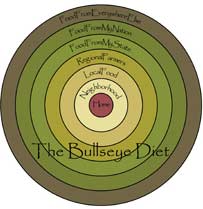 It was mainly Peak Oil that drove me out into my garden with a new mission; no longer just to grow a few tomatoes for fun each summer, but in an effort to grow the majority of the food my family eats. I set out a goal of producing more calories than I consume on my own property and within 5 years. I called my project ‘Growing My Own’. But there were others factors tugging at me, entreating me to take personal responsibility for the needs of my diet.
It was mainly Peak Oil that drove me out into my garden with a new mission; no longer just to grow a few tomatoes for fun each summer, but in an effort to grow the majority of the food my family eats. I set out a goal of producing more calories than I consume on my own property and within 5 years. I called my project ‘Growing My Own’. But there were others factors tugging at me, entreating me to take personal responsibility for the needs of my diet.
And I can see now that there are lots of other people becoming interested in local food and they’re doing so for a variety of reasons. Some of them want to avoid the potential health threats increasingly associated with industrial agriculture. You can get your daily update of just what food has been recently recalled as a health hazard by visiting this handy website the U.S. FDA recall website. The fact that such a site exists is a telltale sign of our increasingly dysfunctional relationship with what we eat. To be sure there have always been local incidents of accidental food poisonings and the like, but now that our system of growing and distributing food is so centralized, the risk of mass contamination from food borne illness is much higher. My favorite example is the recent Castleberry’s Chili recall in which cans were literally bursting with botulism. In the face of all the human health problems swirling around the anonymous origins of industrial food, many people are now opting to get their food from known local sources.
Kate Bosworth Litters at Global Cool
I can’t believe we are following up a happy green post on Orlando & Kate promoting the environment with this.
Says the Mirror:
Bloom was furious when Kate – who plays Lois Lane in Superman Returns – dropped some litter and a cigarette butt at a green charity’s rock festival in Japan. The Pirates Of The Caribbean star was embarrassed because he was there to make a speech…
Our source revealed: “Japan’s very clean and everybody carries around disposable ash trays to stub out their cigarettes.”
“Orlando had a massive go at her. He said they were meant to be there to promote the environment and she was chucking litter around. There was a lot offing and blinding. Kate kept saying ‘nobody saw, I don’t know what your problem is’.”
Orlando, 29, had planned to be at the festival for two days. But they cut short the trip and flew to Tokyo where Kate, 23, was plugging Superman.
We hope the lovebirds don’t let a bit of litter come between them…
As for these “ashtrays to go” that were mentioned? The pouch says: ”The earth is not your ashtray.” Well, actually, it says, “The earth is ont your ashtray,” but we get the picture.
We need this to become popular in the US. Maybe then we’ll stop catching these “green” celebrities, RED-handed.
Iowa State Fair Builds Wind Turbine To Power Rides, Grounds
You know the fair is coming to town when flatbed trucks loaded with rides guaranteed to make you sick start appearing. This year in Iowa, another thing that spins is making an appearance — the creation of a 133ft. tall wind turbine for the Iowa State Fair.
Built by MidAmerican Energy Co. as part of its Renewable Advantage Program, the turbine will power all the rides and grounds for the extent of the fair. According to installers, the entire site could be taken off-grid as a result. We’re guessing this is a 1.65MW variety turbine. From the article,
Electric drag racer
I don’t care who you are, this right here is pretty darn cool. What an interesting way to reuse an old car and make a nice commuter vehicle, although it appear he may have gone overboard!
When the starting light flashed, the Datsun, known as White Zombie, shot silently past the Corvette and kept widening the lead as the two cars faded into the distance. “Oh man, right off the [starting] line he had me,” said the Corvette’s owner, Robert Akers, shaking his head.
Piping in your world
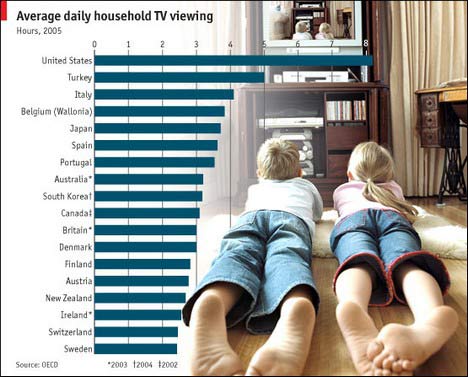
American’s average 8 hours a day of TV time per household. A DAY!!
Folks, it’s time to get outside. Turn it off and go for a walk. Play with the dog. Play with the kids. Start a garden. Have a catch. Whatever, just go enjoy your world.
I don’t think when you are 80 and looking back on your life you’ll wish you had spent more time watching TV.
New Study Says Wind A Cheaper, Efficient Alternative To Nuclear
A report commissioned in the Netherlands and leaked to a Dutch newspaper confirms that wind power will quickly replace nuclear energy as the fossil fuel alternative of choice. The researchers concluded that not only will technological advances in the coming years make wind financially competitive but also security costs tied to nuclear energy will further add to the value. From the article,
“According to the report by the Energy Research Centre (ECN), the cost price of electricity production – around 6.6 euro-cents per kilowatt hour – is already comparable.
However nuclear power is more expensive if the additional costs of security against terrorist attacks is taken into account. Meanwhile technological advancement will make wind power increasingly cheaper in the coming years.
Eco-Libris: Offset Your Book With A Tree
Offsets are all the rage currently, but trying to figure out exactly where your cash is going can be a difficult exercise. Something I consistently stress is that offsets should be a last-resort solution — with tangible green acts coming first that show immediate benefits. With the launch of Eco-Libris, however, I’m excited to see a direct relationship between the act of offsetting and the planting of trees in developed countries. Additionally, the site has teamed up with some incredible reputable organizations like Sustainable Harvest International, RIPPLE Africa, The Alliance for International Reforestation.
How does it work? From the site,
“About 20 Million trees are cut down annually for virgin paper used for the production of books sold in the U.S. alone. That’s definitely a problem – trees are one of the most valuable natural resources we have. They literally form the foundations of many natural systems and provide us with numerous benefits (carbon dioxide absorption, soil and water conservation, avalanche control, desertification prevention to name a few).
Don’t Buy Water From Fiji
If you’re looking for another way to lessen your impact on the environment might I recommend not buying bottled water; especially bottled water from Fiji.
From Boing Boing
The label on a bottle of Fiji Water says “from the islands of Fiji.” Journey to the source of that water, and you realize just how extraordinary that promise is. From New York, for instance, it is an 18-hour plane ride west and south (via Los Angeles) almost to Australia, and then a four-hour drive along Fiji’s two-lane King’s Highway.
I’ve got to say this one goes in the common sense category. First of all think about how much pollution a trip like that takes. Secondly, who pays $3.00 for a liter and a half of drinking water? Lastly how many Americans don’t have running water and drinking glasses in their homes and offices? Don’t like the taste or purity of what’s coming out of your tap?Buy a filter. Don’t be a sucker and fall for yet another of corporate America’s clever pieces of propaganda.
Planet Earth: The Complete Series
It is hard to adequately express my admiration of the recently released BBC production of Planet Earth: The Complete Series. This 11 part mini-series originally aired on the Discovery Channel here in the United States and is now packaged in its entirety as a five disk set. 25 million dollars in the making, this series is an exquisite look at life on Earth in all its spectacular variety and breathtaking wonder. You might think I’m just slinging around adjectives at this point, but let me assure you that there aren’t any adjectives that on their own do justice to this seminal piece of nature documentary.
Narrated by David Attenborough, the man behind that smooth British voice we’ve all come to associate with great nature programming, the DVD compilation of this series also contains 90 minutes of additional footage and bonus coverage with explanations of just how these spectacular scenes were filmed. The time and effort put forth to bring these images to life is in its own right amazing. And the combination of strategies involving time lapse photography, space cams, super slow motion video, helicopters, submersibles, hot air balloons, remote cameras and more, is rewardingly comprehensive in its ability to paint a grand picture of what life is like in many of the most beautiful, most remote, and most magnificent regions of our planet.
71% Think Global Warming Has Nothing to do With Man’s Actions
And they aren’t blaming women either. Pocket Issue and AOL have issued a press release that shows the results of 4000 people polled with almost 3 out of 4 believing that human actions aren’t causing global warming, with 65% going further to agree with the notion that scientific findings on this issue are “far fetched.” What strikes me as odd is how people all over the radio are claiming this as proof that global warming just isn’t our fault. “If that many people believe it isn’t true, then it must not be true,” goes the logic in resposne to a statement by the Intergovernmental Panel on Climate Change that says global warming is,
very likely due to the observed increase of anthropogenic [man-made] greenhouse gas concentrations.
Very likely, they later clarify means 90% sure. But this recent poll doesn’t surprise me. Least I forget,
Don’t Mess With Texas On Wind Power?
The last place you would expect the world’s largest wind farm to reside would be the state of Texas. The Lonestar State has for many decades been a poster child for the oil industry. A wealthy oilman and investor by the name of Boone Pickens is turning a greener shade and hoping to cash in on the burgeoning U.S. renewable energy industry. From the article,
“Pickens’ proposed new energy gamble is important to Texas because it could put the state another significant step toward reducing its heavy reliance on fossil fuels for electricity generation. It also could help solidify Texas’ No. 1 ranking among the 50 states in wind power generation capacity.
Never accused of thinking small, Pickens could put as many as 2,000 wind turbines on nearly 200,000 acres in thinly populated Gray, Roberts, Hemphill and Wheeler counties. He’s talking about generating 2,000 to 4,000 megawatt, roughly the equivalent of one or two Comanche Peak nuclear power plants and enough juice to power several hundred thousand homes.”
“Powered By 100% Vegetable Oil” Bumper Sticker Triggers $1K Fine!
Today’s world of “choice” for what you can use to power your vehicle may in fact cost you lots of money. As one man found out in Charlotte, NC simply promoting your independence from oil can cost you thousands of dollars. From the article,
“Bob Teixeira decided it was time to take a stand against U.S. dependence on foreign oil.
So last fall the Charlotte musician and guitar instructor spent $1,200 to convert his 1981 diesel Mercedes to run on vegetable oil. He bought soybean oil in 5-gallon jugs at Costco, spending about 30 percent more than diesel would cost. His reward, from a state that heavily promotes alternative fuels: a $1,000 fine last month for not paying motor fuel taxes.
He’s been told to expect another $1,000 fine from the federal government. And to legally use veggie oil, state officials told him, he would have to first post a $2,500 bond.”
My Starbucks Doesn’t Recycle. Does Yours?
Yes, I enjoy Starbucks Coffee. Let’s just get that out of the way. I actually prefer a local joint called Gimmie! Coffee over them, but Gimmie! is a little out of the way for convenience sake so the ‘bucks works for me from time to time.
It doesn’t mean, of course, that I lower my green standards. I scrutinize just as much as any other joint here in Ithaca. Starbucks has been stepping up their efforts to become “more green” with various efforts over the past year. Recycled paper sleeves, pastry bags, green initiatives with Global Green USA, etc. So, they’ve got that going for them.
However, I noticed something strange today for the first time. My Starbucks does not recycle. When asked were the bin was located, the woman behind the counter said that just have regular garbage cans. Great.
Tesla Motors Takes Aim At Hotel Chains For Commercial Charging Stations
The electric car renaissance is barely spreading ink on the canvas and already plans are in motion to have a viable charging infrastructure in place. Earlier this week, Tesla Motors — the crew behind the highly anticipated 2008 Tesla Roadster — received a grant from the California Air Resources Board (CARB) to develop a 16KW station that could be installed at hotel chains across the state. While the stations would be commercially based, we have no idea if they might also be autonomous through solar power; much like the stations Vectrix is planning on introducing in Europe.
Tesla also recently announced plans to form a new division that will sell batteries to other car manufacturers.
“The electric-car startup said it will initially provide advanced lithium-ion battery packs from the new Tesla Energy Group to Think, a Norwegian maker of electric cars. The deal is expected to bring Tesla $43 million over the next two years. The new division will also develop and make battery packs for Tesla’s two-seat roadster that is set to go into production this fall, and for a four-door sedan set to debut later this decade.”
Adventures In Sustainability: Growing My Own Biofuel With Jatropha
I just received a package from India. Yes, I know it was a terribly long distance to order something for a green living site; but my buying options were extremely limited in the U.S. So, turning to Ebay, I managed to find what I was looking for fairly quickly. And now, after traveling thousands of miles, I have my first jatropha seeds.
What’s jatropha? It’s a small shrub that is being planted by the millions throughout China, India, and Brazil as an alternative to oil. What makes it unique in the biofuel industry is its ability to produce a great deal of oil that needs very little refinement. A one-metre hedge will produce one kilogram of seeds with each seed containing about 1/3 of oil. 5 kilograms of seeds will give you roughly one litre. It yields more than four times as much fuel per hectare as soybean, and more than ten times that of corn. It’s extremely easy to grow, lives up to 50 years and produces seeds for its whole lifetime. Furthermore, the species is drought-resistant, can be grown at high altitudes and can withstand slight frosts. In the right conditions, each plant can grow eight or ten meters in height!
Vectric Shareholder Report Shows Promise For Electric Super Bikes
The Vectrix shareholder report for April 2007 just dropped into my lap. Besides some beautiful eye candy, the document lays out some important milestones reached by the company; as well as future developments underway for the vehicle line. Here are some of the highlights:
>>Financially, Vectrix has firmed things up by appointing HSBC to undertake a strategic review which could lead to a flotation. Such a move could would see the company valued at up to 200m. Yee Haw. Additionally, the big V might put itself up for sale to attract a larger company or interested private party. We’ll keep our ears open on this one.
>>Besides its launch in the EU late last Fall, Vectrix now poised to push the new all-electric bikes in the UK (indeed, they launched yesterday) and in the U.S. by the end of June. Over 2,100 customer reservations in the U.S. alone are waiting to be fulfilled. The first 700 scooters allocated for the American market will see a roll out in major U.S. cities so as to increase visibility of the product. Look for the bikes in Seattle, Austin, Portland, San Francisco, Newport, and other locales. By the end of 2007, there will be up to 50 official Vectrix dealers in 8 countries (Italy, Spain, England, Portugal, Switzerland, Greece, Australia, and USA). Plans are already underway to expand distribution to Japan, France, Germany, and Israel.
Read More
Only In The Pet Food? Hogwash!
Do you think the chemical that has been killing animals all over the country hasn’t made it into the human food stream as claimed by the government and food corporations? Do you want to bet on that?
Salvaged pet food contaminated with an industrial chemical was sent to hog farms in as many as six states, federal health officials said Tuesday. It was not immediately clear if any hogs that ate the tainted feed then entered the food supply for humans.
Hogs at a farm in California ate the contaminated products, according to the Food Safety and Inspection Service. Officials were trying to determine whether hogs in New York, North Carolina, South Carolina, Utah and Ohio also may have eaten the tainted food, the FSIS said. Hogs at some of the farms — it wasn’t immediately clear which — have been quarantined. link
The Smart Jitney: Rapid, Realistic Transport
 Community Solutions recently issued a report about modifications necessary to our transportation infrastructure in a future world where we experience declining oil supplies. (Community Solutions, if you aren’t familiar with them, is the group that created the documentary “The Power of Community: How Cuba survived Peak Oil”) They are proposing a system they are calling the Smart Jitney, which is essentially a souped up ride share program designed to reduce the amount of cars on our roads. And I have to say, I like it. I like it a lot.
Community Solutions recently issued a report about modifications necessary to our transportation infrastructure in a future world where we experience declining oil supplies. (Community Solutions, if you aren’t familiar with them, is the group that created the documentary “The Power of Community: How Cuba survived Peak Oil”) They are proposing a system they are calling the Smart Jitney, which is essentially a souped up ride share program designed to reduce the amount of cars on our roads. And I have to say, I like it. I like it a lot.
I recently read through a report by Alliance Bernstein about the future of automobiles where they placed all the marbles for our future transportation needs in the plugged in hybrid basket. Essentially making quite a few difficult, and risky, assumptions that we will be able to sequester power plant emissions (unproven), generate clean energy for our homes and cars (not at the levels we are generating now), and create a new infrastructure built around a totally new type of car (to the tune of hundreds of billions of dollars). In short, they are making some huge leaps there to support their given choice for transportation.
How To Grow Shitake Mushrooms
Anyone who’s been to a gardening class or a permaculture class about how to produce more food from home has heard the question, “What can I grow in the shade?” Shaded areas, especially deeply shaded areas of the yard, are not especially conducive to growing fruits and vegetables. Those plants like sunlight. So what is a Victory Gardener to do? One answer is mushrooms.
At this point I’d like to share my status as a novice concerning mushroom cultivation. This is my first attempt at growing fungi for personal consumption so feel free to learn with me but please don’t label me an expert. I’m just figuring this out as I go and sharing the experience. I’m following the directions of the Mushroom People of Summertown, TN. I’m going to grow Shitakes and you’re welcome to follow along.
After receive my inoculation plugs in the mail, my brother and I thinned several trees from a family member’s property.
Savinar and Sundance Deliver On Documentary “A Crude Awakening”
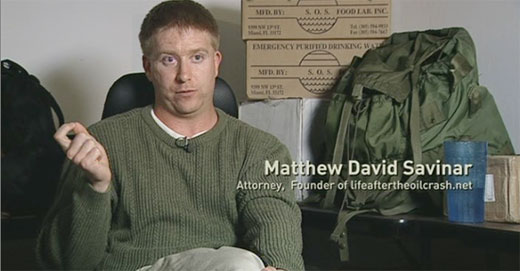 A friend to Groovy and always ready with an interesting comment or two, Matt Savinar is reaching out through your television in The Sundance Channel’s THE GREEN. This new three-hour block of television premiering this Tuesday features a wide range of high-quality programming covering issues of sustainability and green ideas. I received a few screeners a couple weeks back and have been pouring over the shows with great interest; after all, this is a guy without television and I was happy not to miss out on the series.
A friend to Groovy and always ready with an interesting comment or two, Matt Savinar is reaching out through your television in The Sundance Channel’s THE GREEN. This new three-hour block of television premiering this Tuesday features a wide range of high-quality programming covering issues of sustainability and green ideas. I received a few screeners a couple weeks back and have been pouring over the shows with great interest; after all, this is a guy without television and I was happy not to miss out on the series.
I launched into a full review over at the green entertainment site, Ecorazzi, but I wanted to put a little more emphasis on this week’s 90 minute documentary, A Crude Awakening. Obviously, this piece covers the issue of Peak Oil and does a masterful job of slowly easing into the topic in such a way that makes the dire consequences that much easier to grasp. We’re given phenomenal access to historical video footage of oil boom towns that now look like derelict theme parks and even Marion Hubbert (the father of the theory of Peak Oil) presenting his concept on television in the early 50s mid-70s. Commentary from several notable geologists, politicians, and energy experts adds impressive information (as well as warnings) to the visuals.
Are We Past Peak Knowledge?
In this essay I draw a distinction between facts, information, knowledge and wisdom. I use the term information to mean a collection of facts. I use the term knowledge to mean the absorption and consideration of, experimentation with, and refinement of information; essentially the path to wisdom. Or to work backwards, wisdom is the mastery of knowledge which is the assimilation of information which is a compilation of facts. It might seem unnecessary to distinguish these differences but I believe its one thing to collect facts, quite another to understand how they matter to each other and something entirely different to begin to really know what you’re doing and how you’re doing it; let alone why.
This past weekend my little corner of the world experienced the coldest temperature ever recorded in the month of April in our area- 21 degrees Fahrenheit. Now in North Carolina we’re used to light frost until the middle of this month, but those of us who garden tend to catch spring fever a bit early when we have warm weather in March. This year we did and so I played my part and planted a few early tomatoes before it was really safe to do so.
Eco Fashion Q&A: Sustainable Skivvies
We have returned! New queries have been rolling in, and it is time to start posting some answers. This week’s question comes from e4 (aka Edson): How about green underwear?
Love it – short, sweet, and to the point. Oddly enough, I’ve been doing a fair amount of research on eco-undies in the past month, even being interviewed by a foreign magazine on the subject. Simply put, you’ve come to the right place. ![]()
Anything that is going to come in direct contact with your private parts should be, above all, chemical-free. Organic cotton, bamboo, and hemp are the three most common sustainable fibers for green underwear, all of which are quite comfortable and long-lasting. Though finding these skivvies are not as easy as, say, organic cotton denim, the options are many. As the closest thing to your skin, you owe it to yourself to wear eco-undies.

